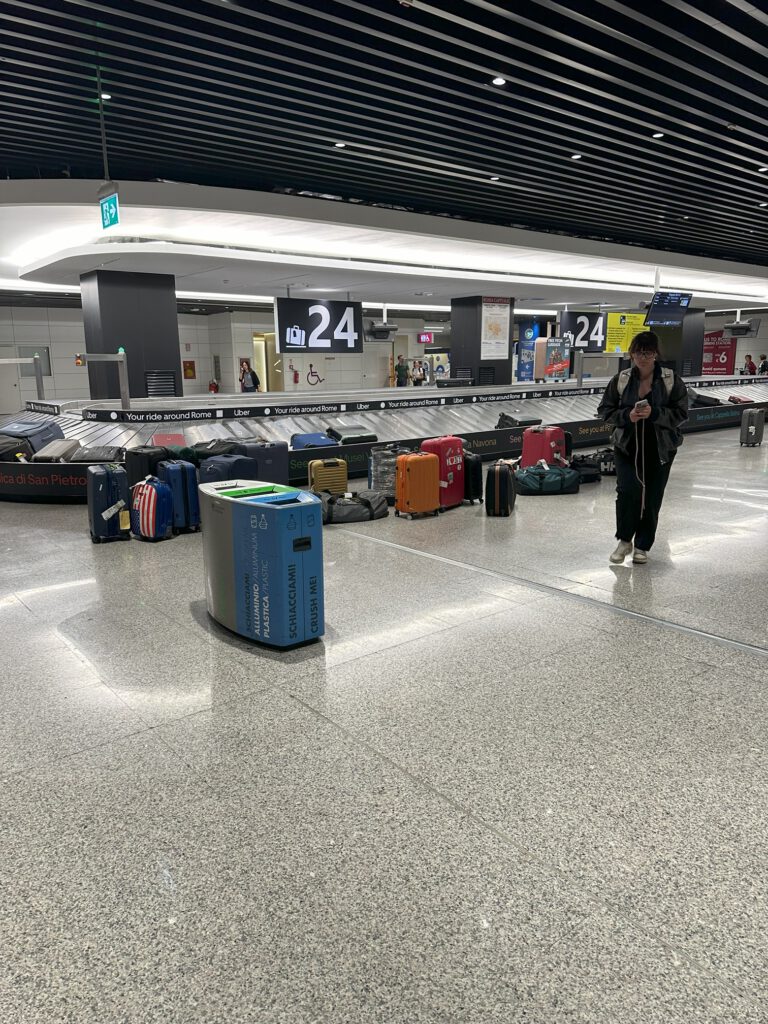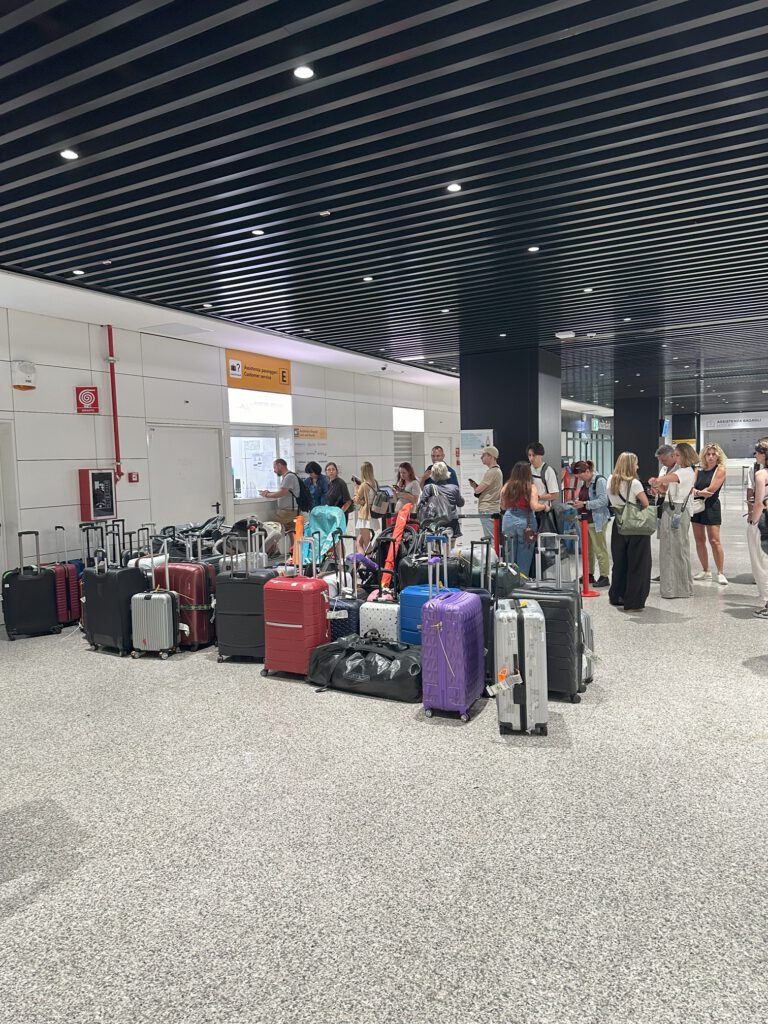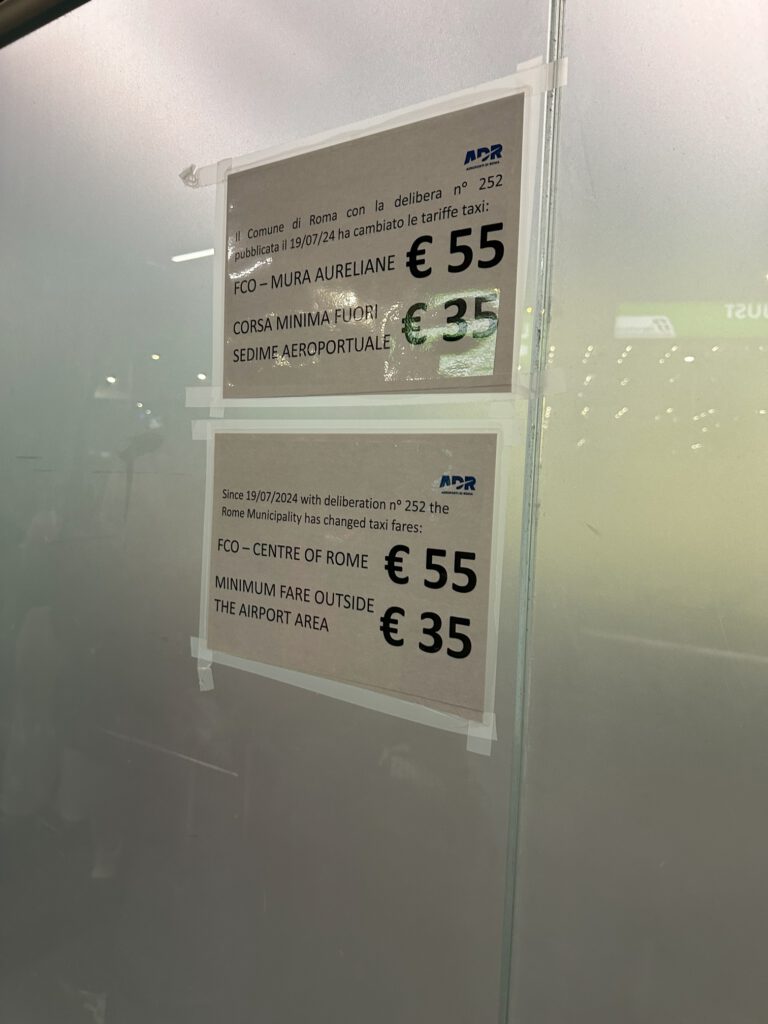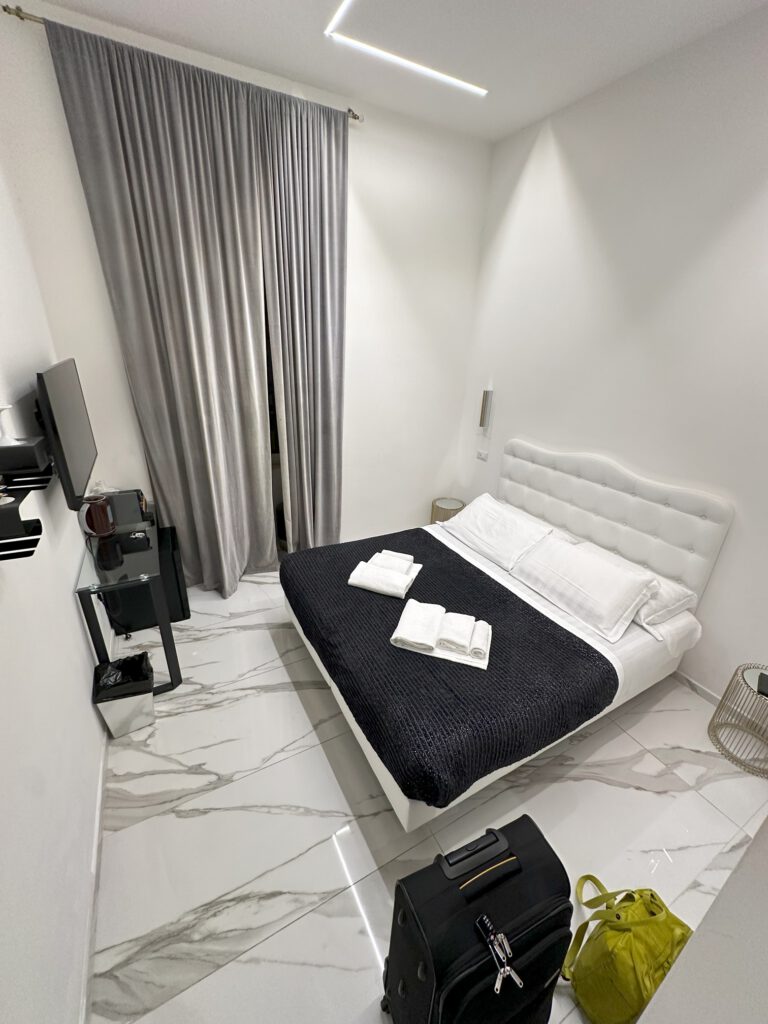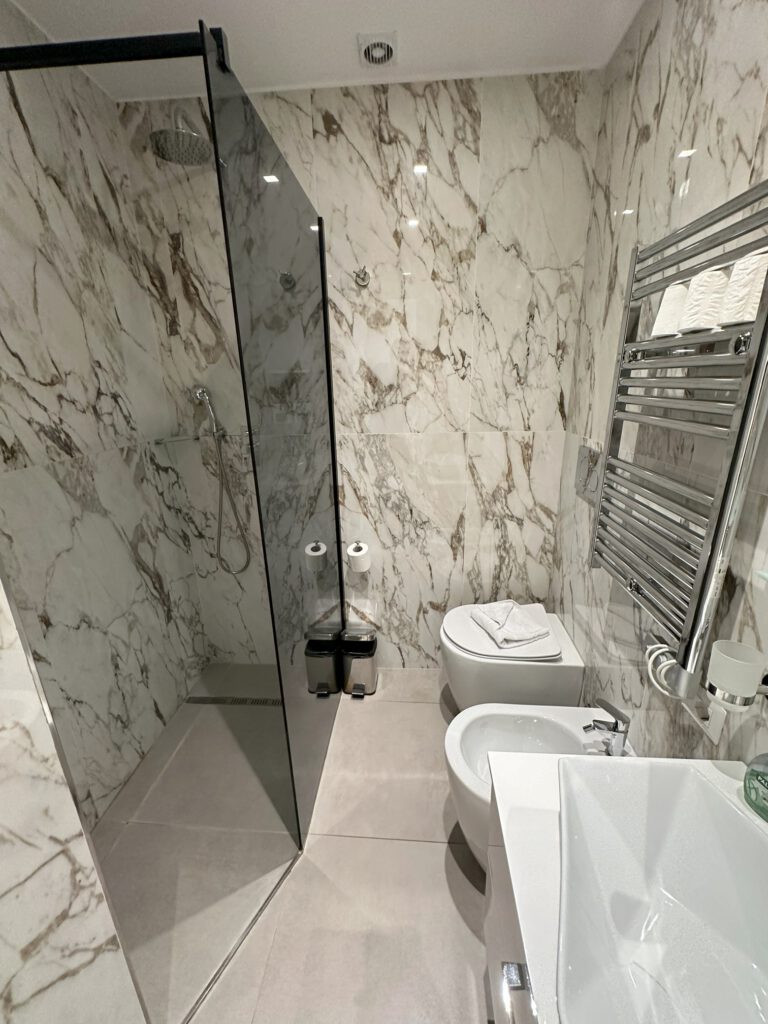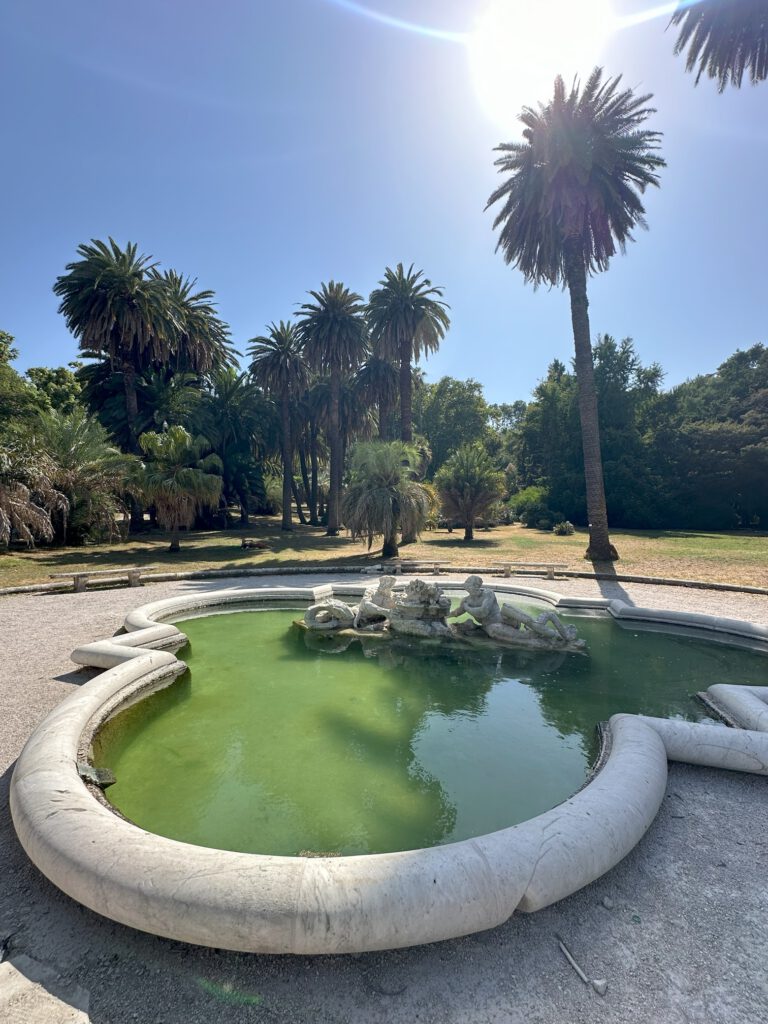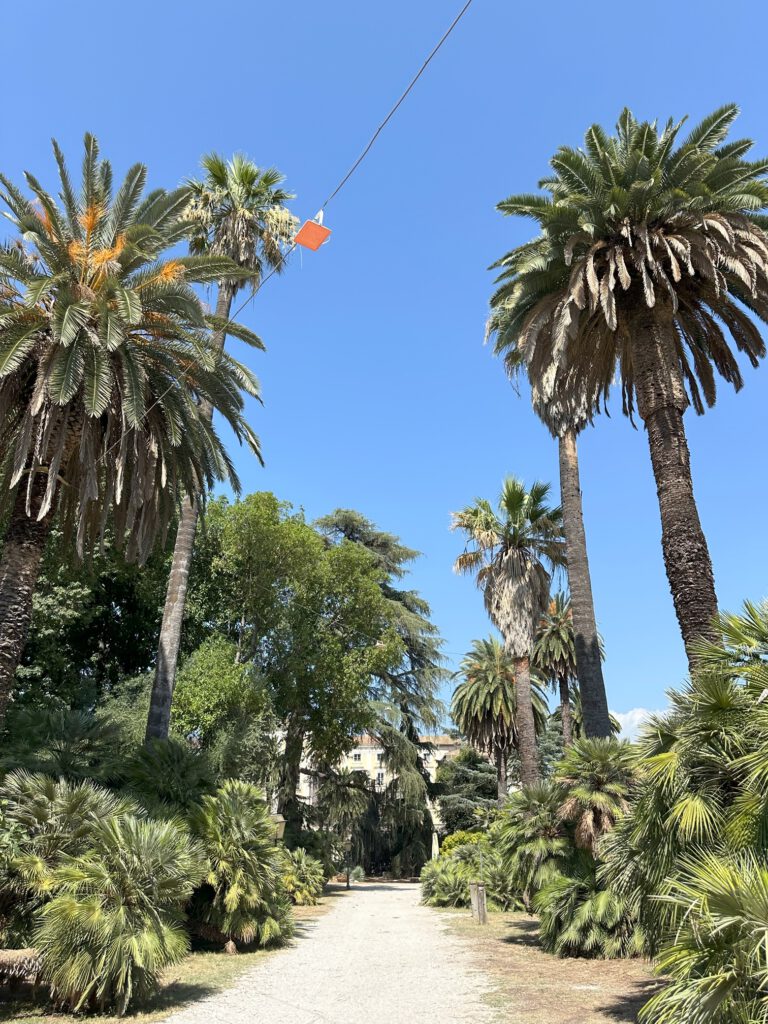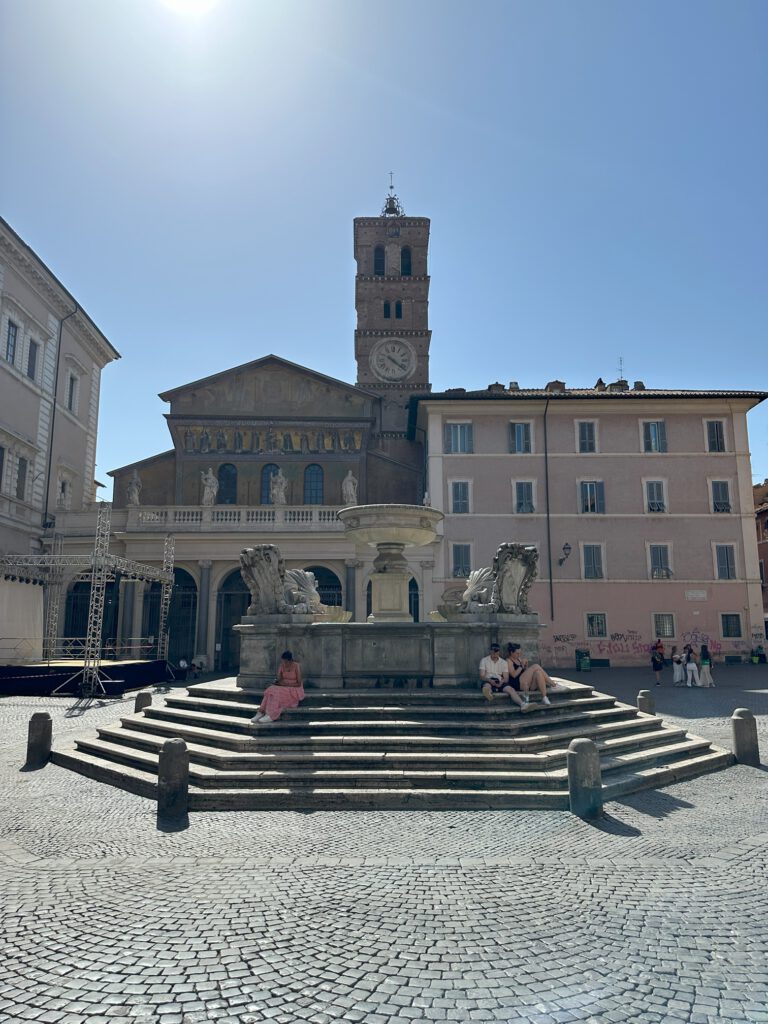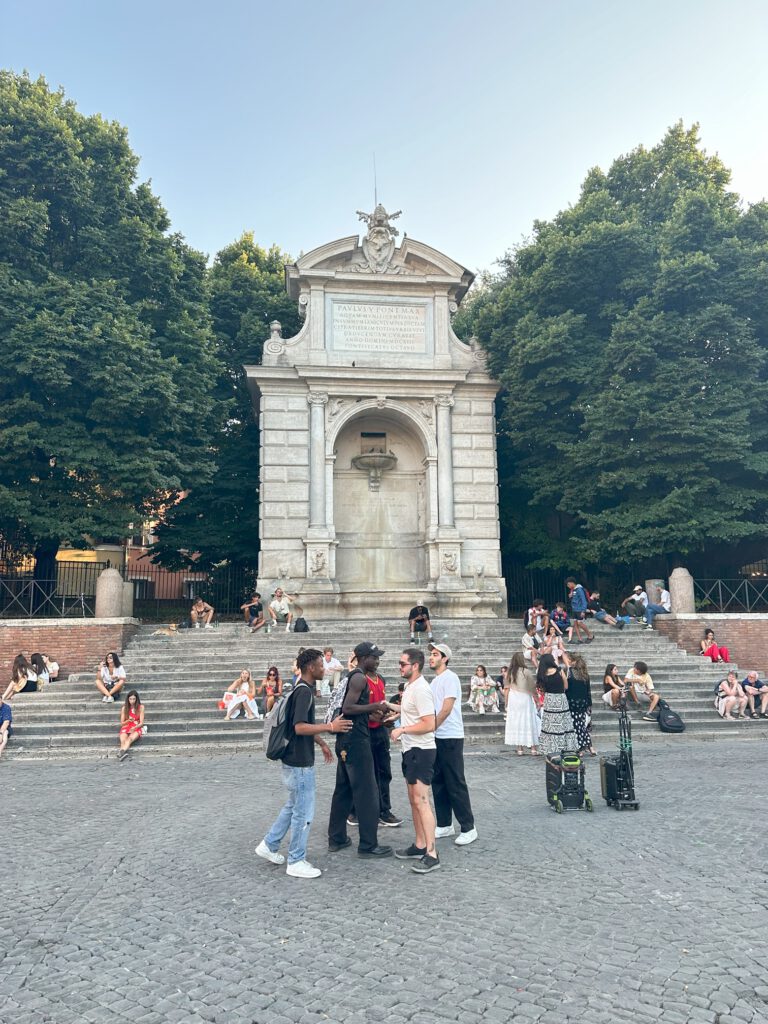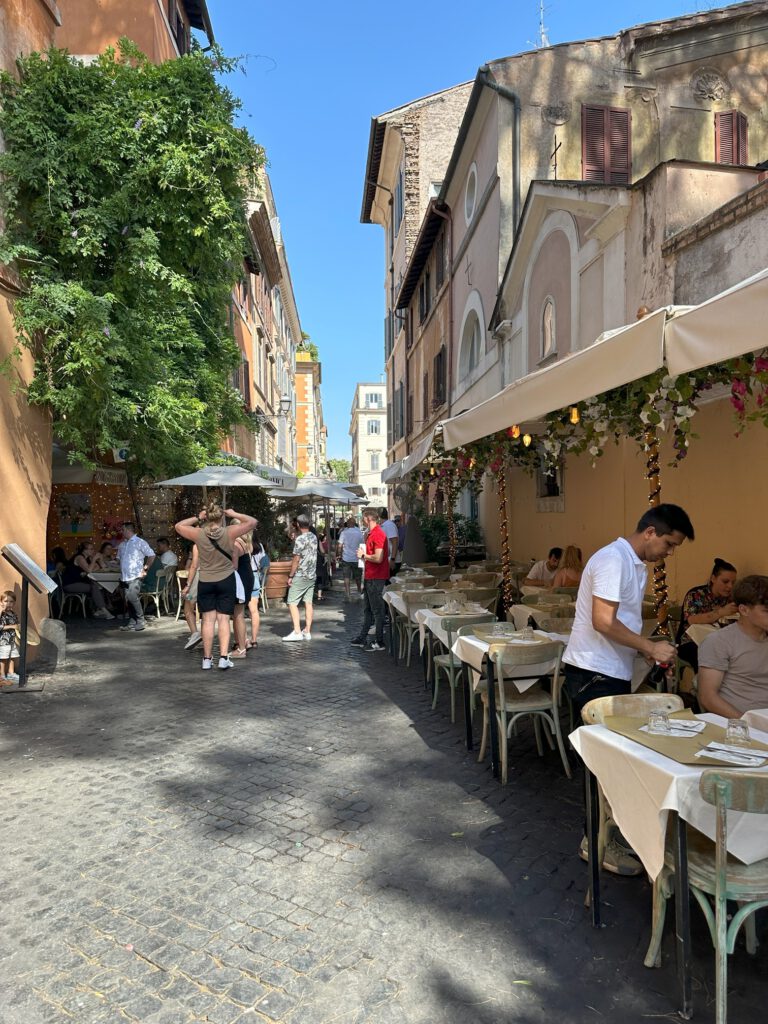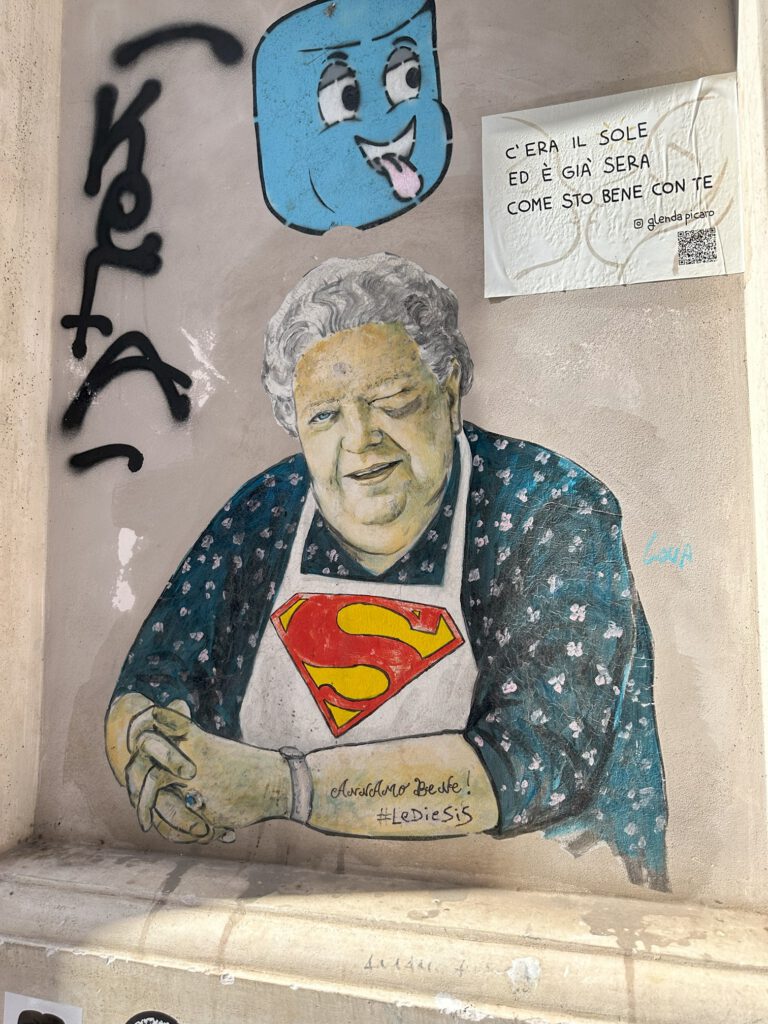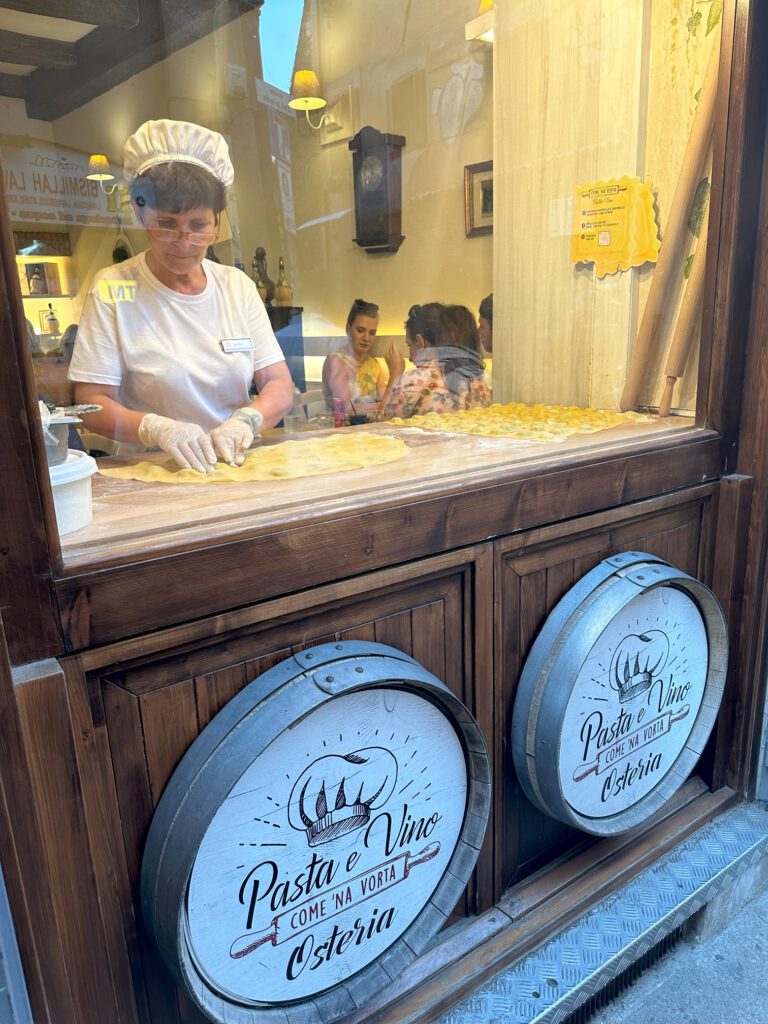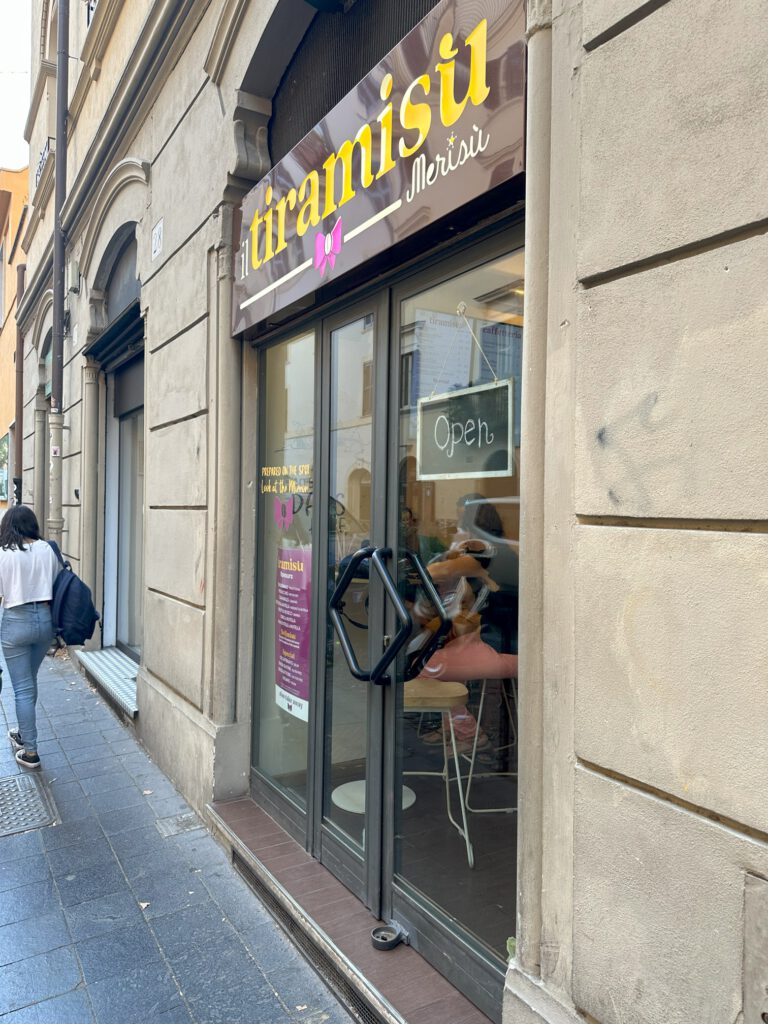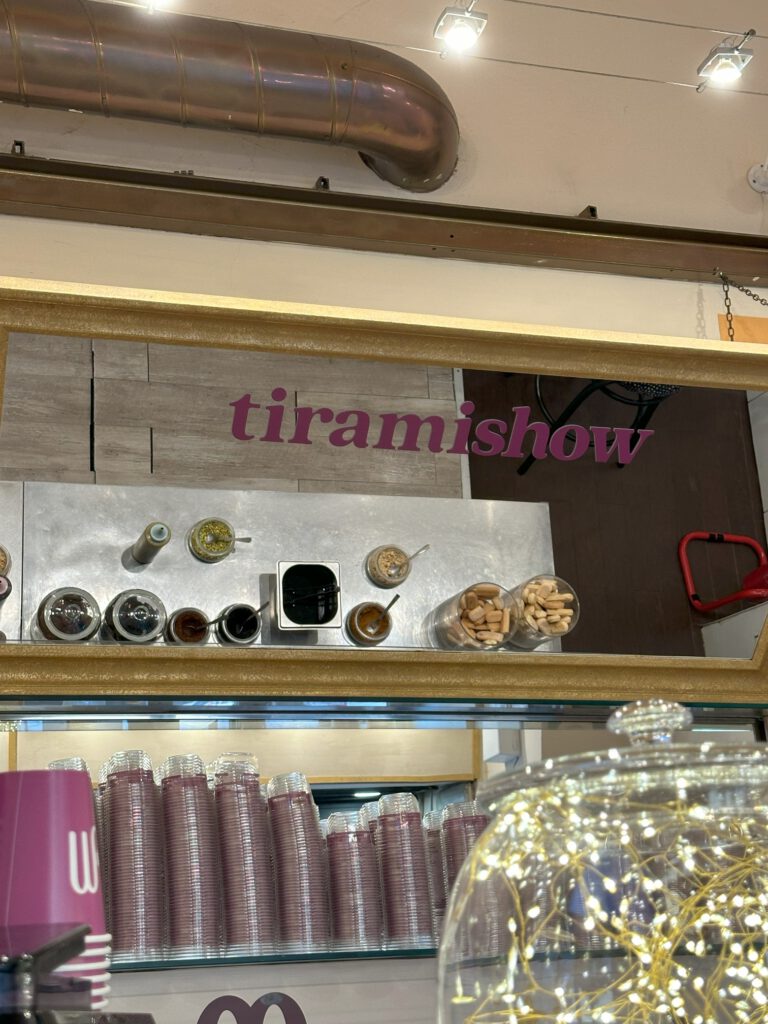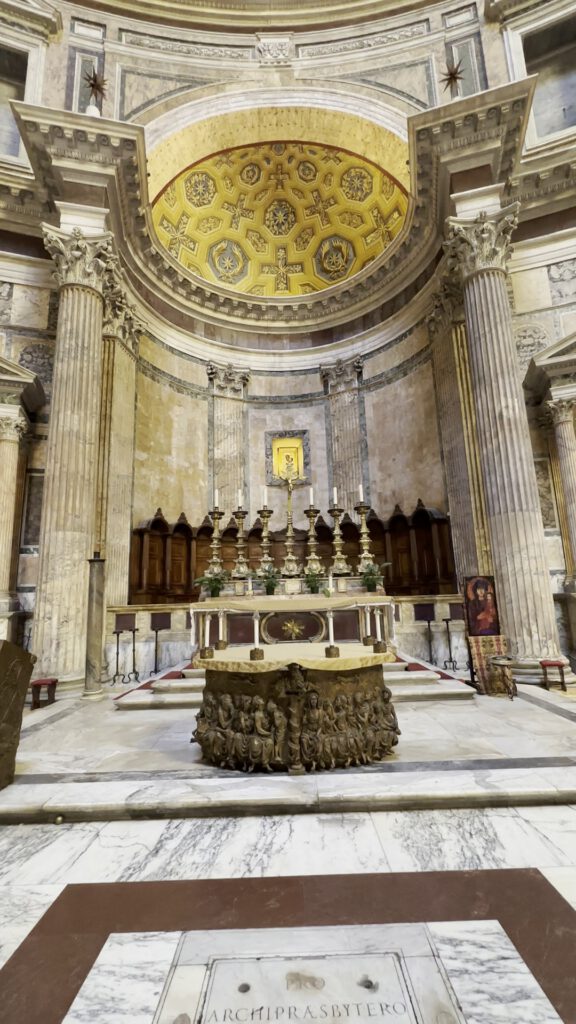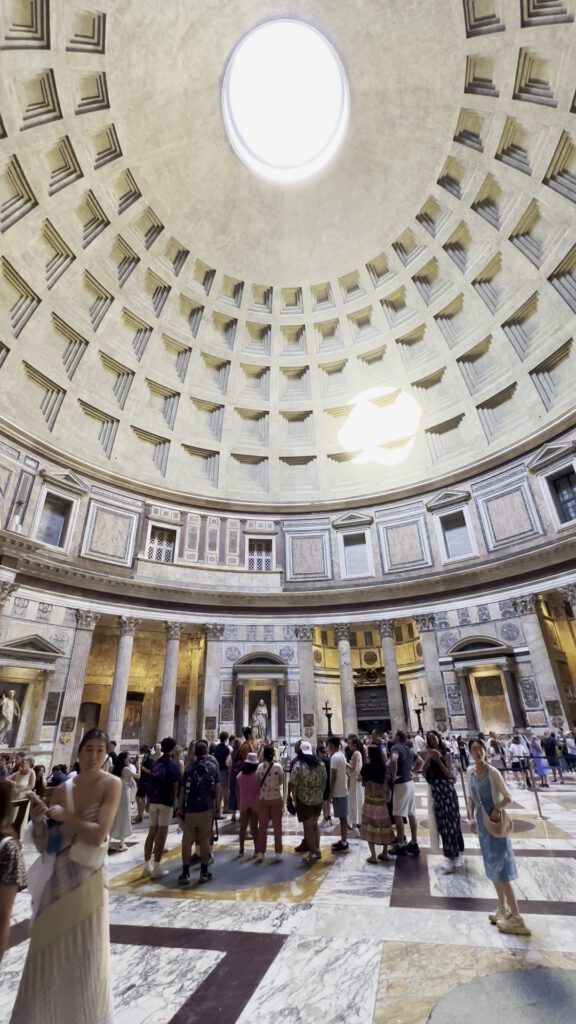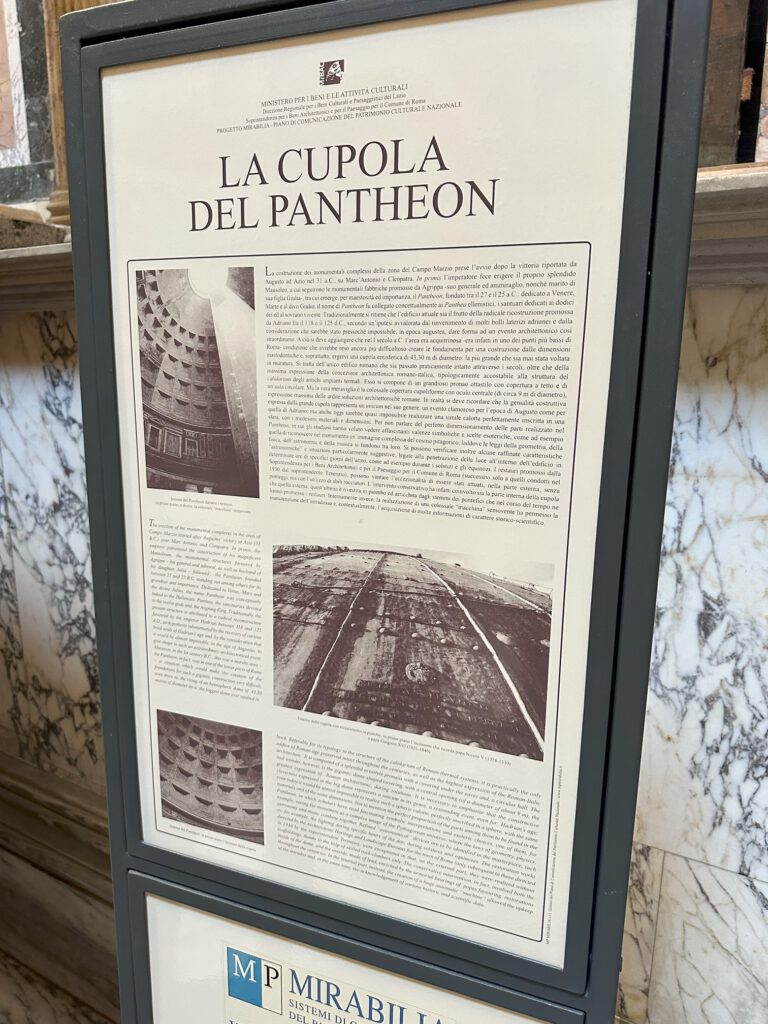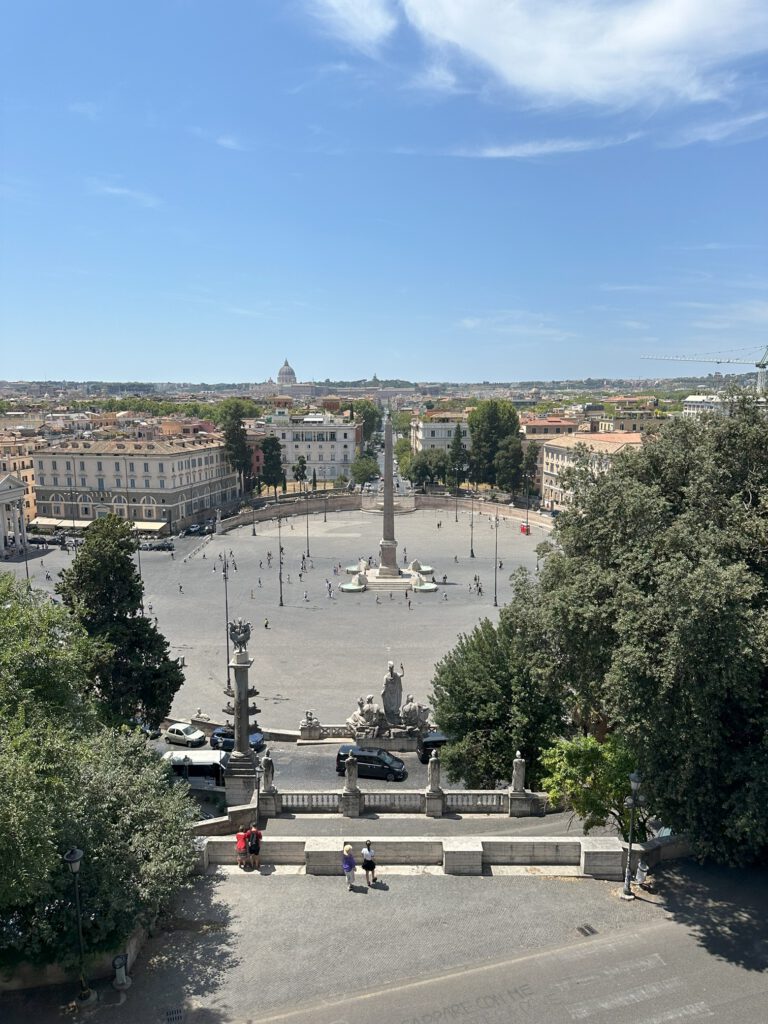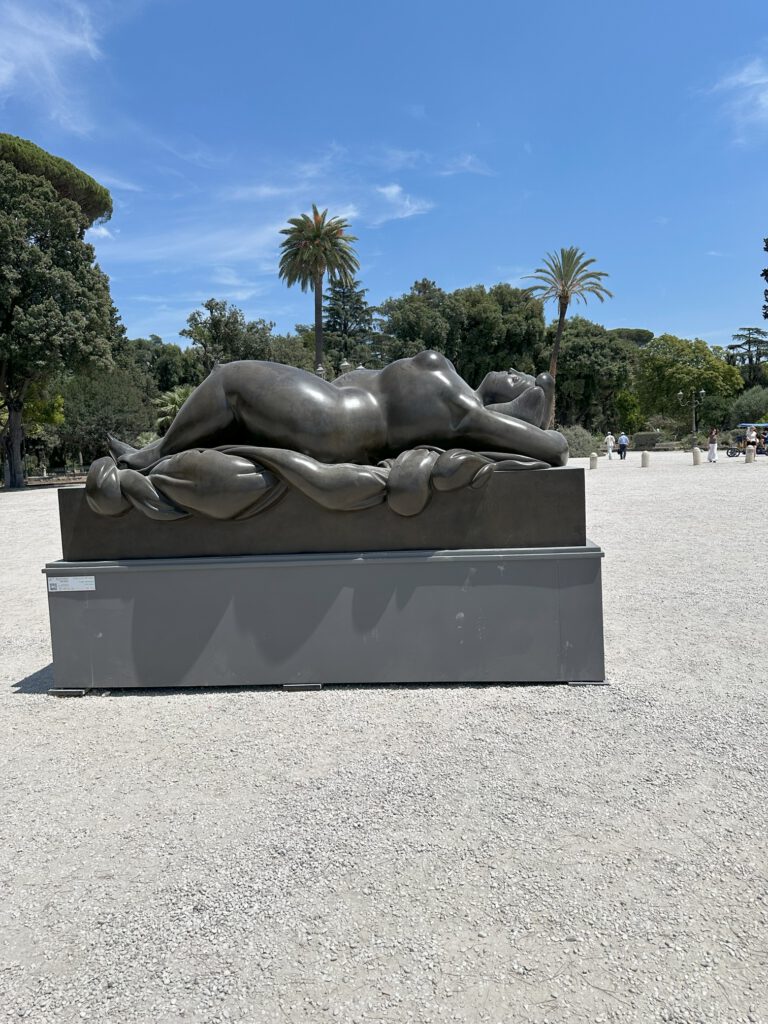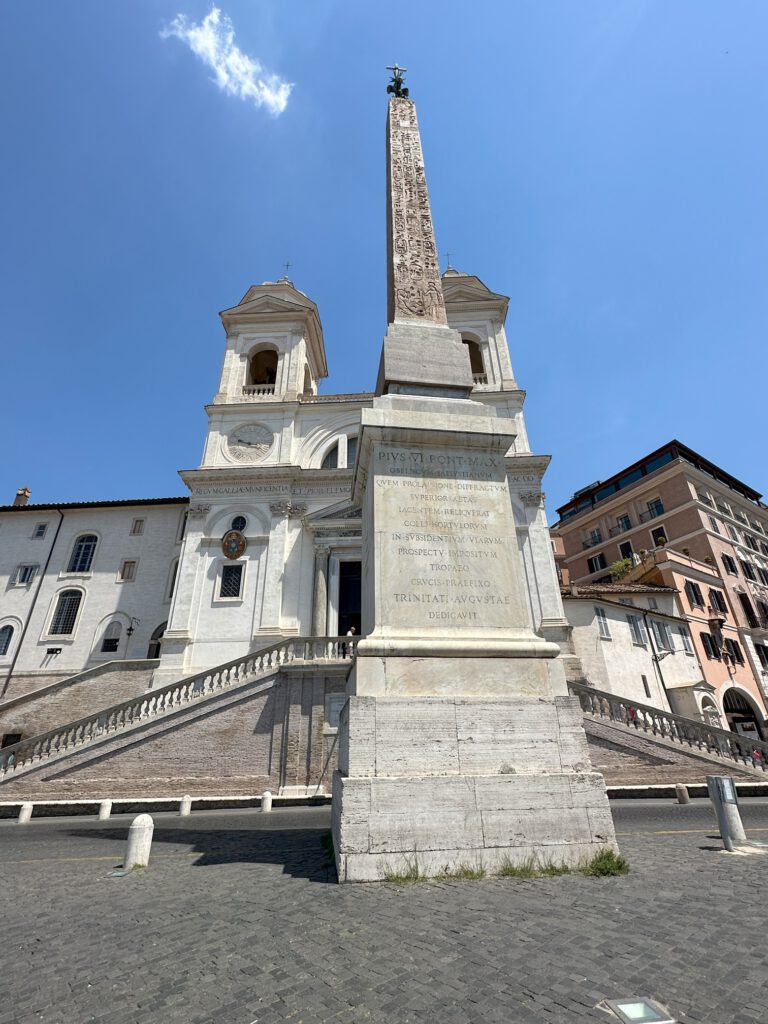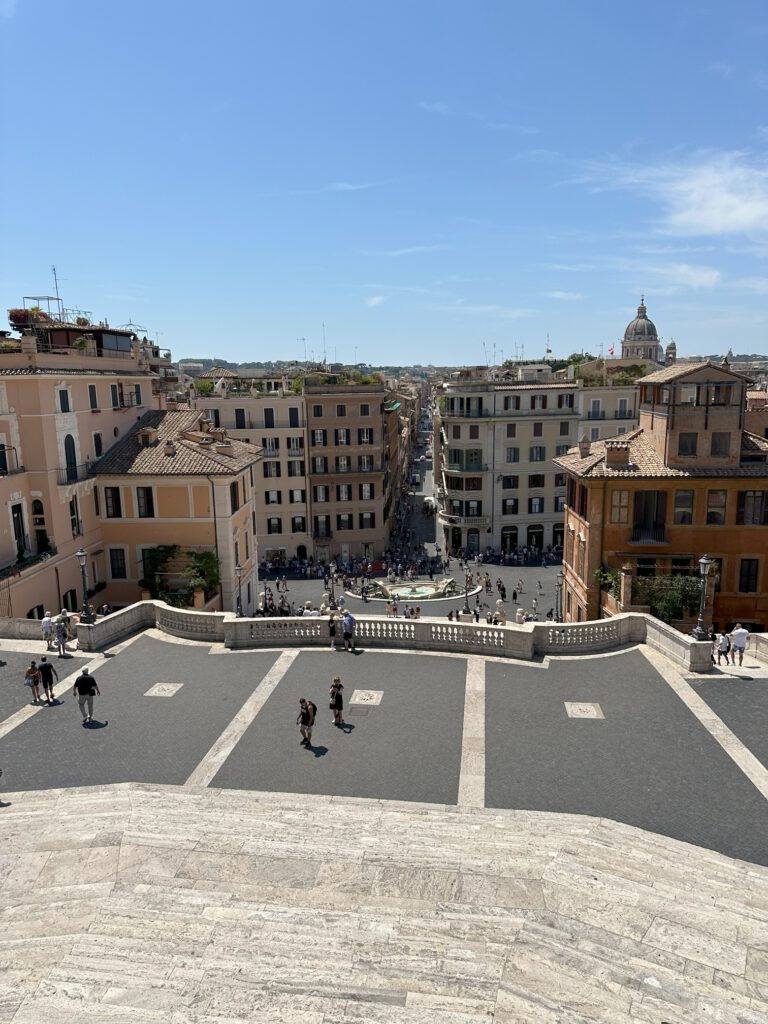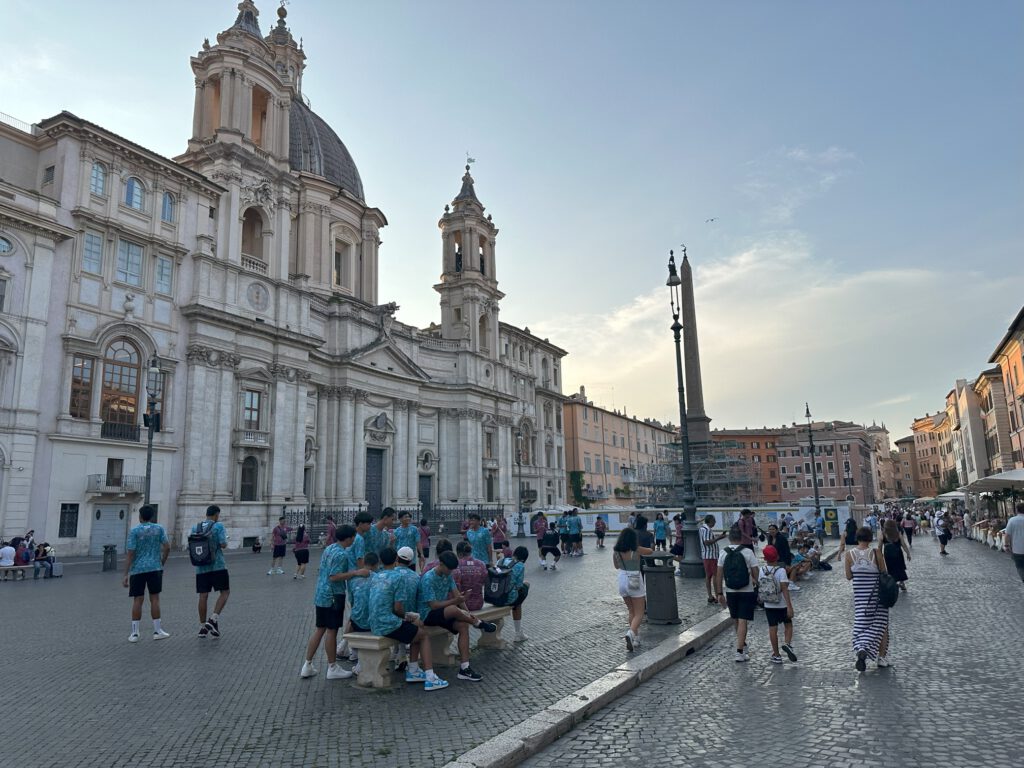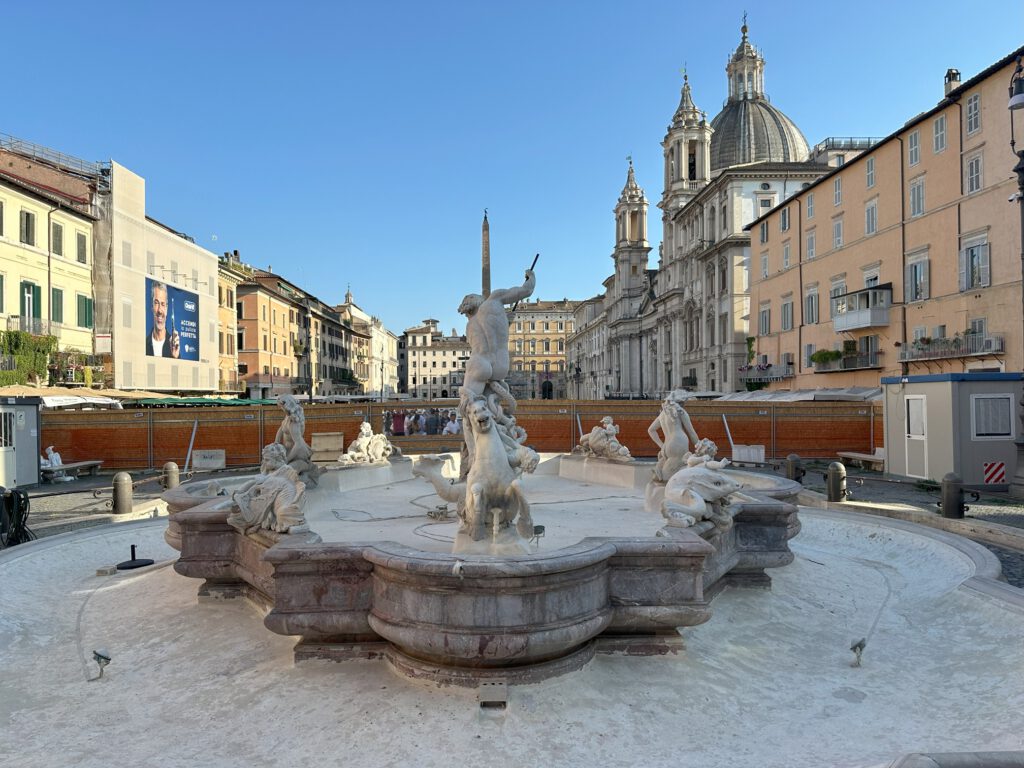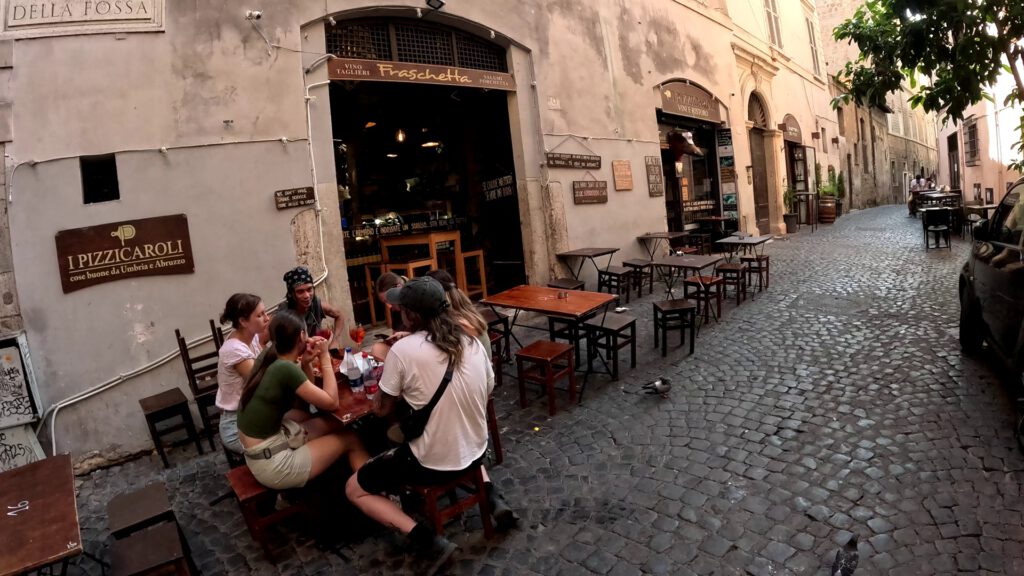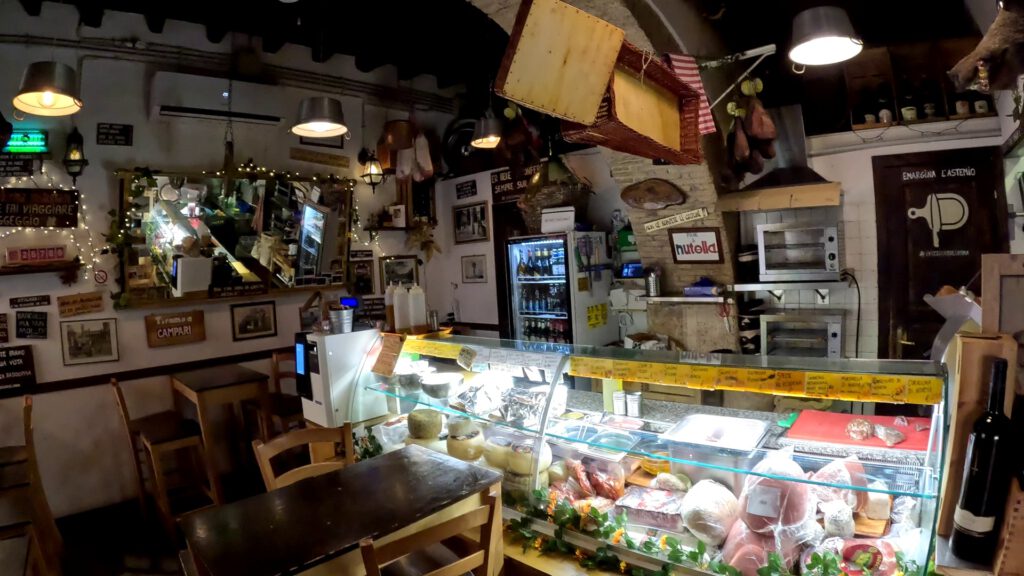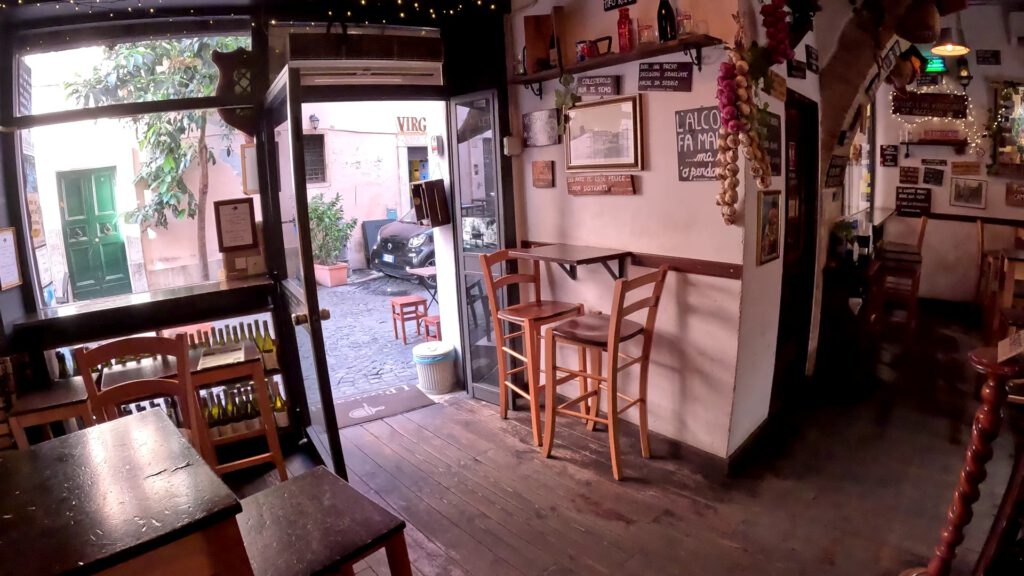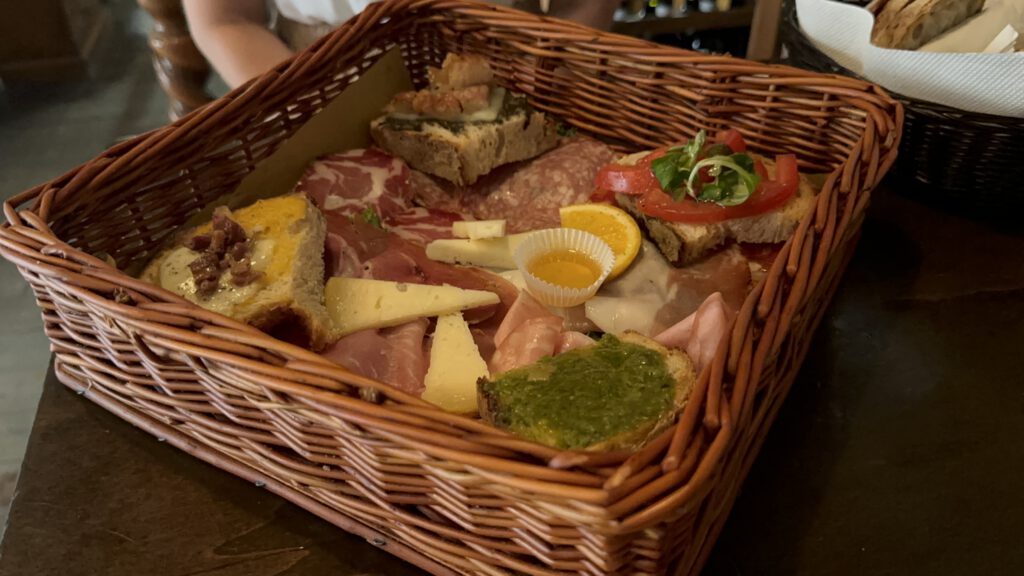27. July 2025
Rome and the Vatican – Day 1 & 2
- 11 Min. Lesezeit
- Italy
I’ve traveled to almost every country in Europe by now, but somehow, I never got around to visiting Italy’s capital. Wait… every country? Not quite! The Vatican is still the final official country in Europe left on my bucket list.
By the way: If you’d rather watch a video than read through the article, just click on “YouTube Video” in the menu on the right, it’ll take you straight to the video of the tour.
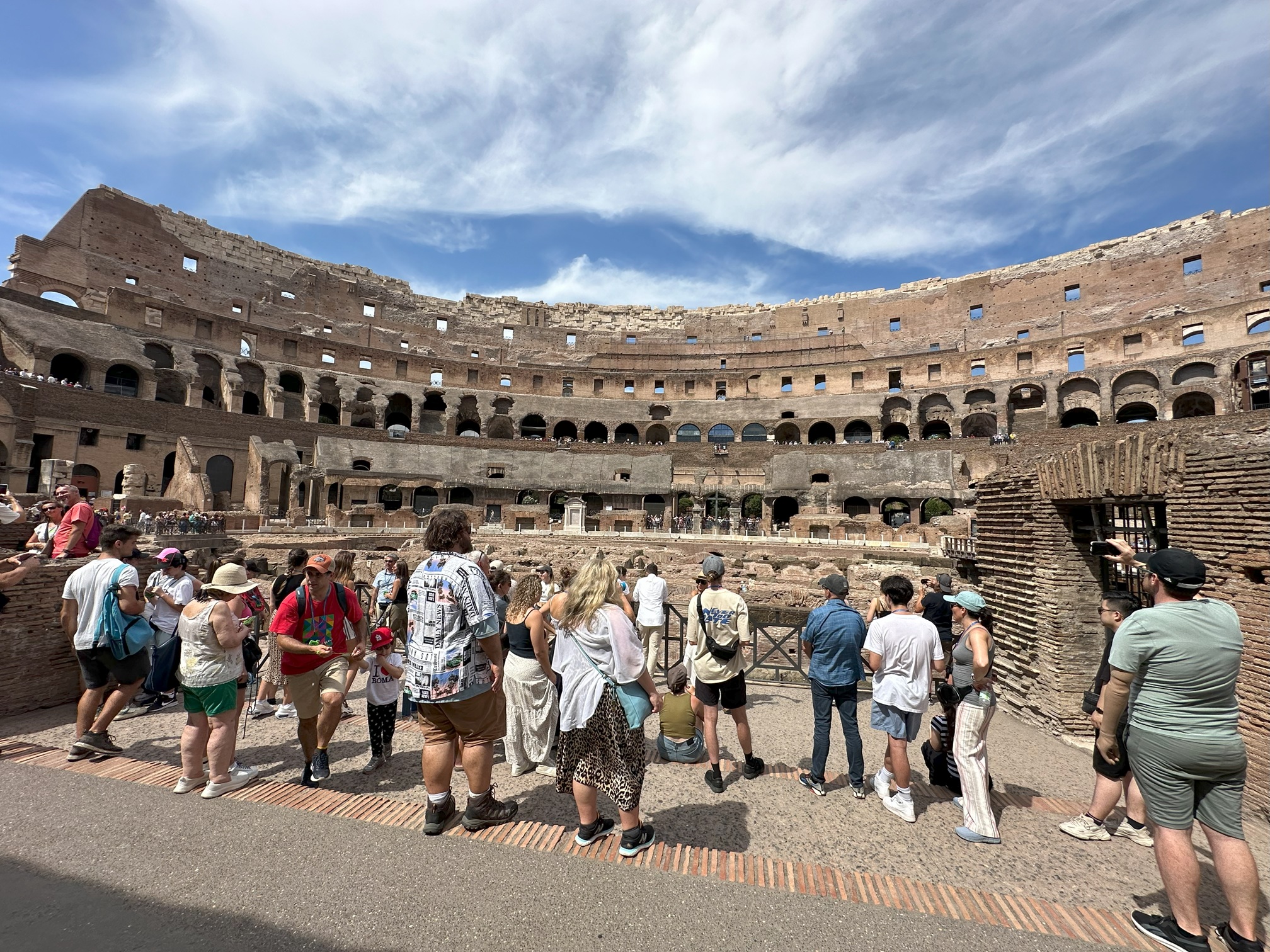
Rome and the Vatican – Day 1 & 2
Arrival at Rome-Fiumicino
We had booked a late flight from Hamburg to Rome Fiumicino with Wizz Air, departing at 8:55 PM. Round trip cost: €467 for two people. But nothing went as planned. We landed with a delay of 2 hours and 15 minutes. Once there, the airport was understaffed, and the baggage claim area was packed with abandoned luggage. We had to wait another 3 hours for our own suitcases to arrive.
Naturally, we missed our shuttle bus. And since it was already past 4 AM and we were exhausted, we ended up taking a taxi to our hotel for €40.
By 5 AM, we arrived at our hotel St. Peter Grand Suite, located close to the Vatican. Thankfully, check-in was super easy: it’s all done via app, including door access, which was perfect for a late-night arrival. If you’re booking the same hotel, try to get the “Adriana” room, we peeked in while it was being cleaned, and I would’ve swapped in a heartbeat!
*Provider: GetYourGuide
Fiumicino Airport (FCO): Bus Transfer to/from Rome Termini
Click here
Fiumicino Airport (FCO): Shuttle Bus from/to Vatican City
Click here
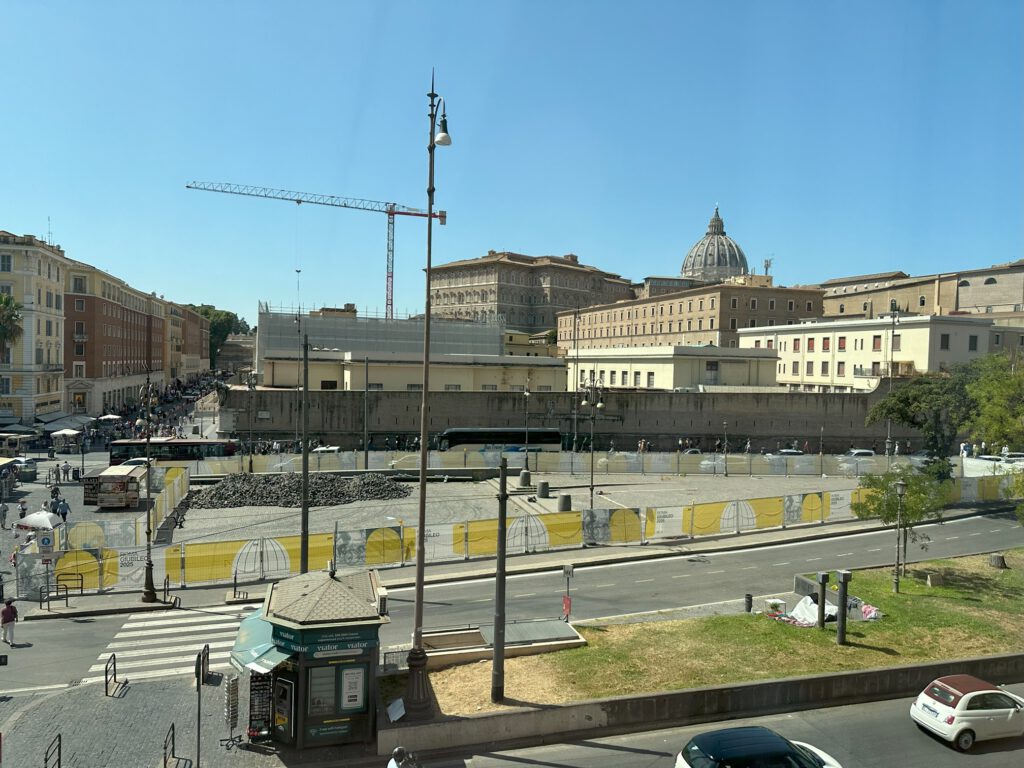
Day 1
Breakfast
After a much-needed 7 hours of sleep, we headed out for breakfast at Maccarone Fresco Caffè & Cucina. We only chose it because it was right next to our hotel, but it ended up being a great surprise. Fair prices and really delicious food.
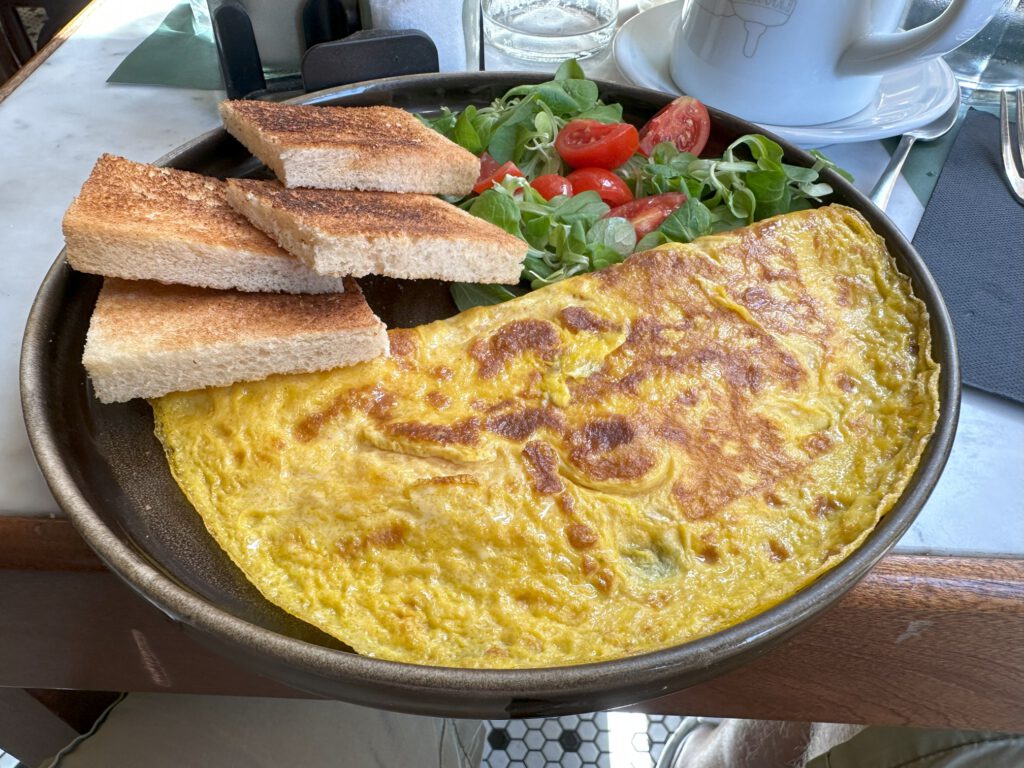
Castel San't Angelo
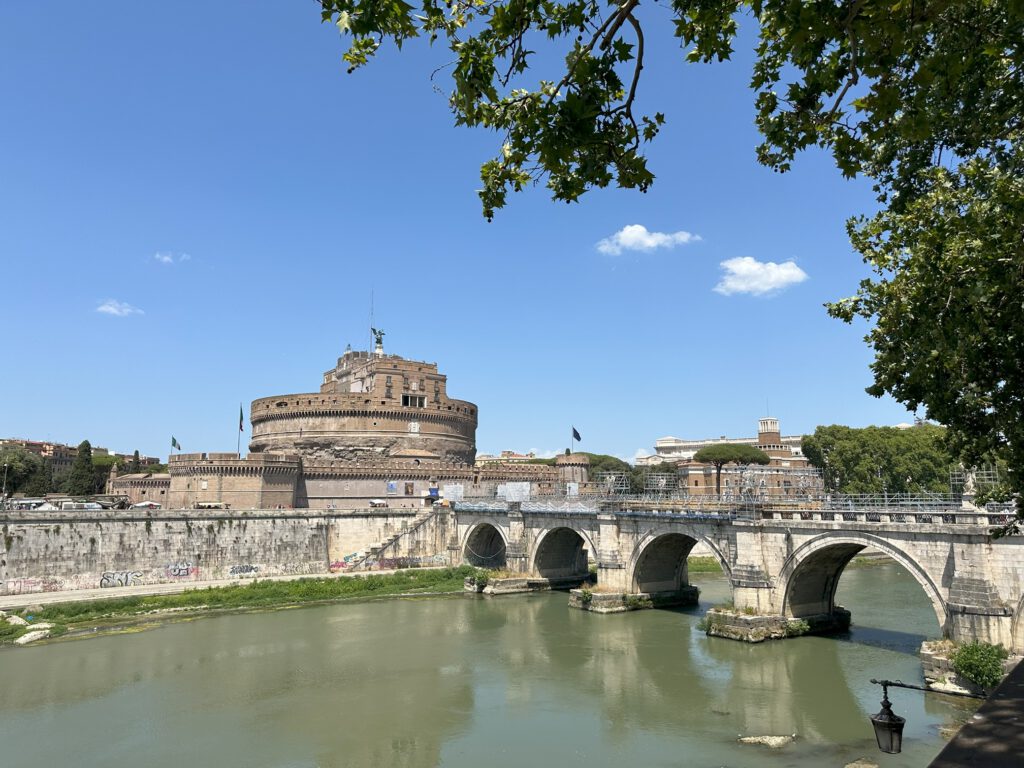
We didn’t book a tour for Castel Sant’Angelo and just showed up around 1:20 PM. There wasn’t much of a line, so we got in pretty quickly. Originally built in the 2nd century AD as Emperor Hadrian’s mausoleum, it was later used as a fortress, papal residence, and even a prison. One of the most fascinating features is the secret passage known as the Passetto di Borgo, connecting the castle to the Vatican. Several popes used it to escape during times of crisis, sadly, we weren’t aware of this in advance and totally missed it.
In 590, Pope Gregory the Great reportedly saw the Archangel Michael appear on the rooftop and sheathe his sword, a sign the plague had ended. Ever since, a statue of the angel stands at the top, giving the structure its nickname: “Castle of the Holy Angel.”
The self-guided tour takes you through multiple levels – from old tombs and narrow corridors to prison cells and richly decorated papal rooms.
But the highlight is definitely the rooftop terrace, with a stunning 360° view over Rome. It gives you a real sense of how vast the city is.
We stayed here for about 1.5 hours.

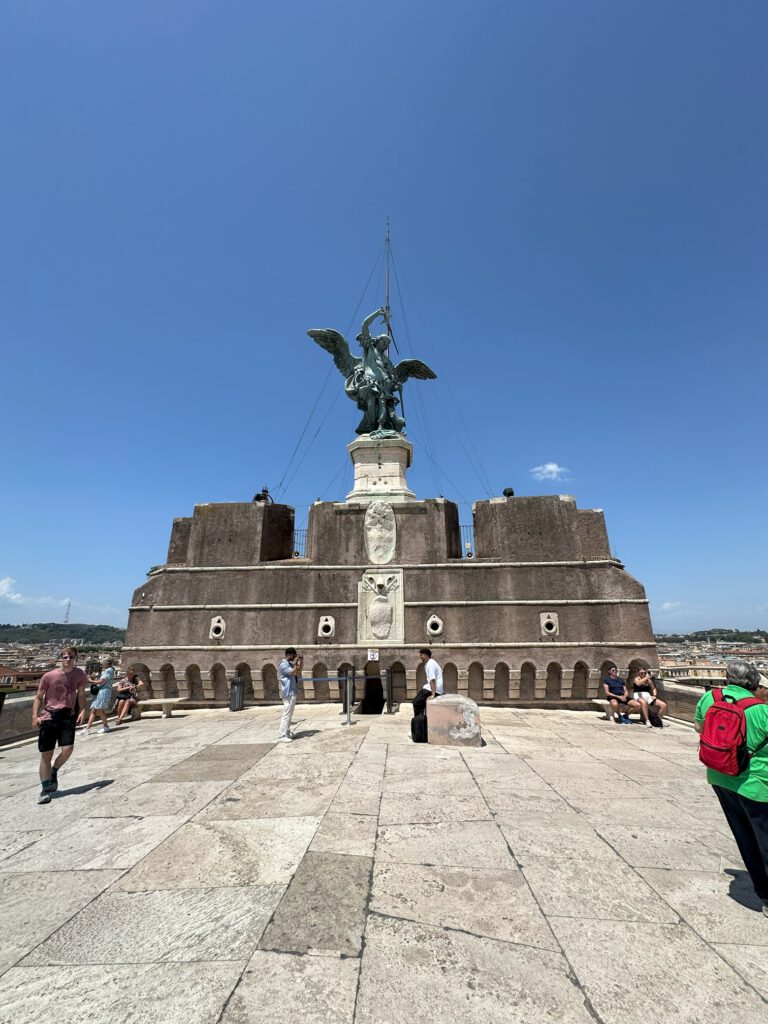
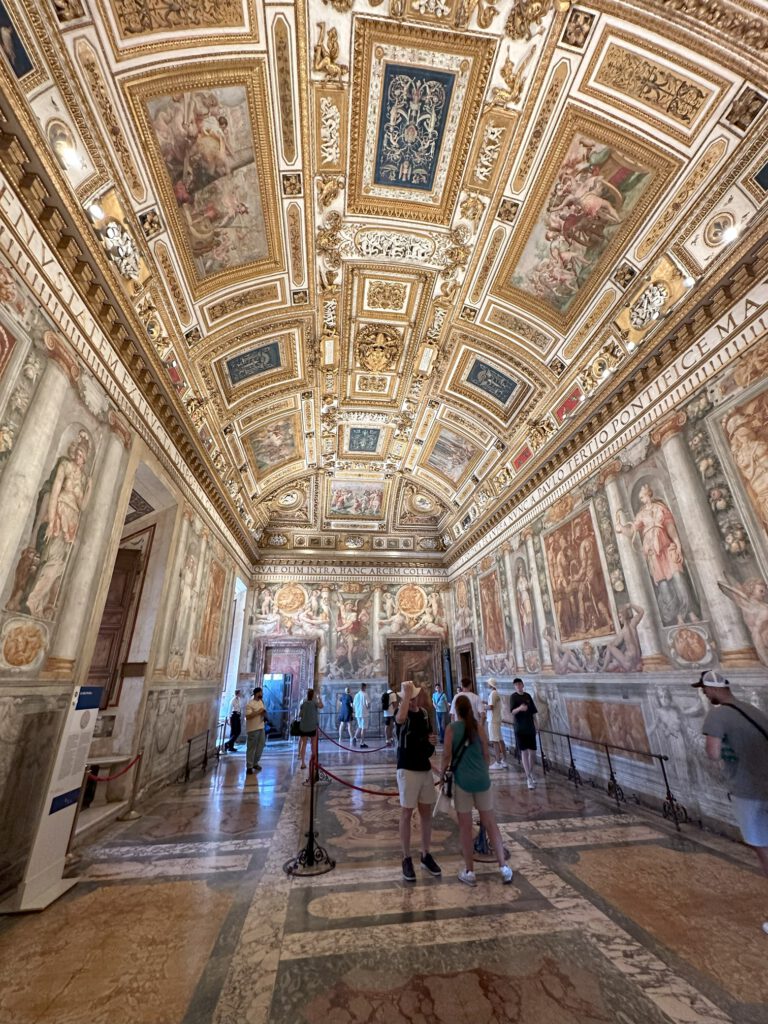
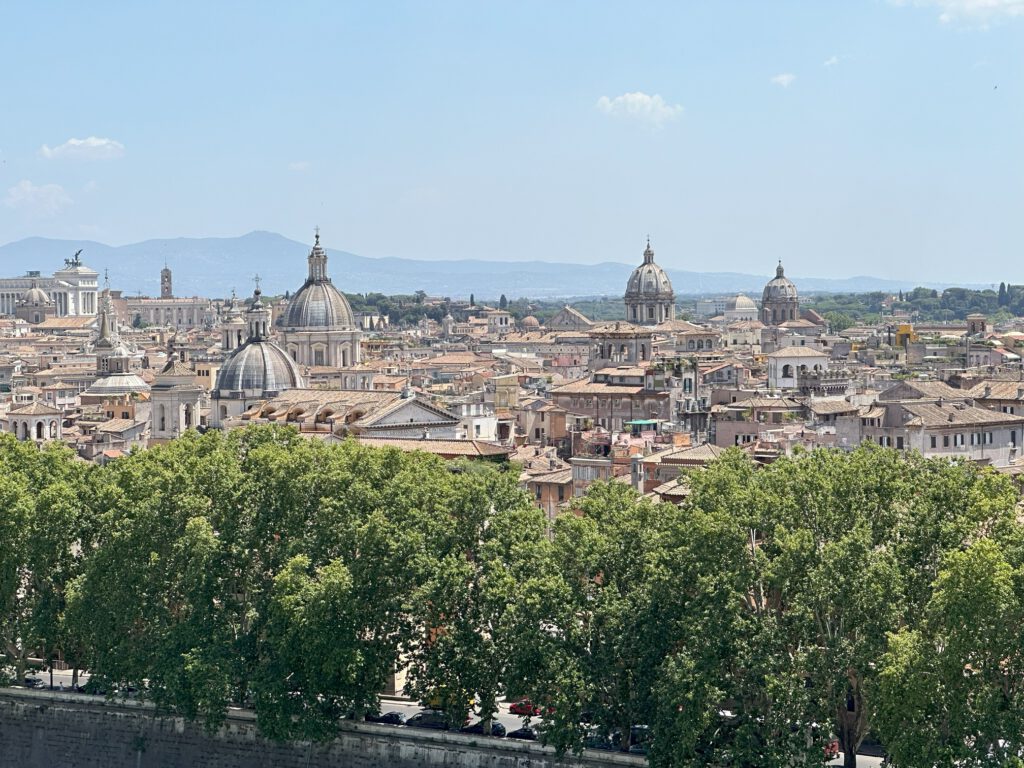
*Provider: GetYourGuide
Passetto di Borgo: The Vatican’s Hidden Passage guided tour
Click here
Rome: Castel Sant’Angelo Skip-the-Line Entry Ticket
Click here
*Provider: Viator
Castel Sant‘ Angelo Tour with Skip the line Access
Click here
Gianicolo Hill
Gianicolo Hill is a place that often gets overlooked by tourists. It’s not on the typical sightseeing route, but the view from the top is one of the best in Rome, stretching from the Vatican all the way across the historic center. And best of all: barely any tourists around.
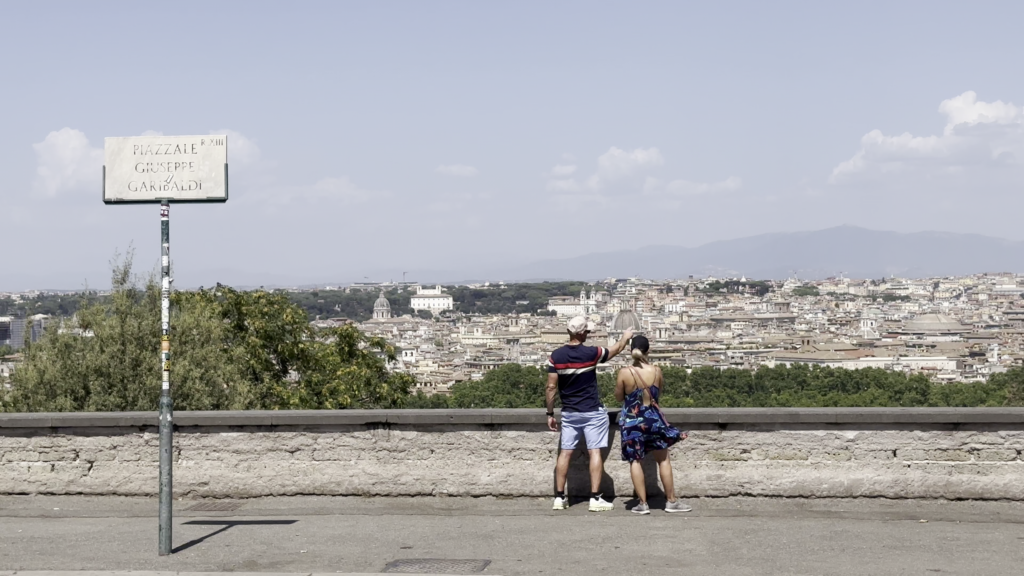
There’s also some history here: a massive statue of Giuseppe Garibaldi, Italy’s national hero, and several smaller monuments nearby. If you’re there at exactly 12 noon, you’ll witness a daily tradition – a cannon shot fired across the city.
Orto Botanico di Roma
Just a few minutes’ walk away from Gianicolo is Rome’s Botanical Garden – Orto Botanico di Roma.
It’s right in the middle of lively Trastevere, but once you step through the gate, it’s like entering another world. The gate was actually open when we arrived, but we still paid via the app like idiots, not realizing we could’ve just walked in.
The garden is huge! A true oasis of nature in the city. You’ll stroll through bamboo groves, palm-lined paths, a Japanese garden, waterfalls, and small greenhouses. The garden belongs to Sapienza University and is beautifully maintained without feeling overly curated.
If you’re visiting Rome in summer and need a break from the crowds, this is the perfect spot. And if you listen closely, you might even spot little green parrots up in the trees.
Trastevere
Afterwards, we were already in what I think is Rome’s most beautiful neighborhood: Trastevere.
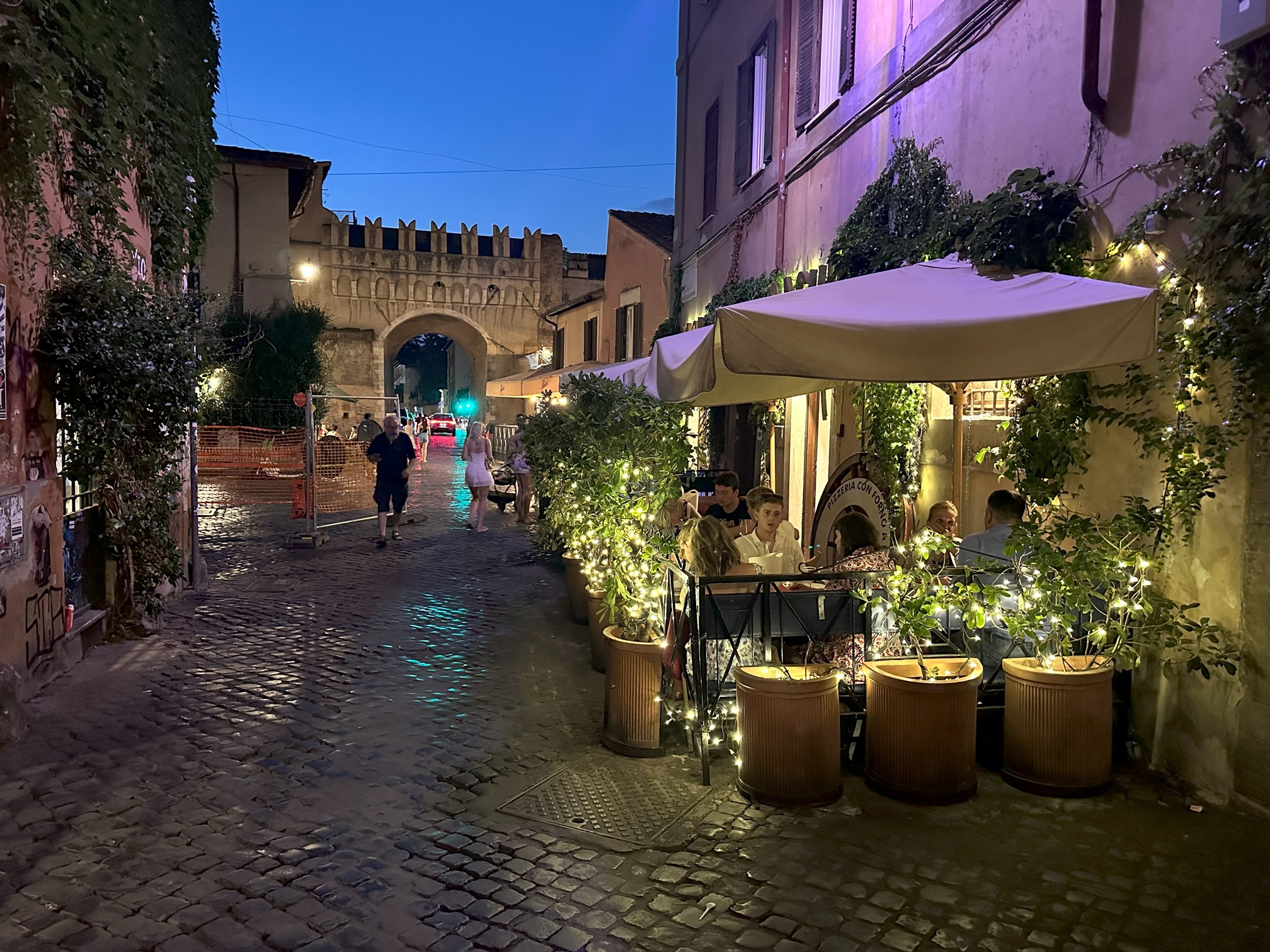
It’s no longer a hidden gem, but it still doesn’t feel like a tourist trap. The alleys are narrow, the buildings have that charming medieval Italian vibe. During the day, it feels sleepy and relaxed! You stroll past small workshops, cafés, laundry hanging between windows, and everything feels exactly like the Rome you imagined. Sometimes you’ll even see traditional dishes being prepared right in the window.
In the evening, the place comes alive. Street musicians, packed restaurants, the smell of fresh pizza and pasta, clinking glasses! Pure atmosphere.
Tiramisù Merisu
We also had one mission in Trastevere: try the tiramisu at Tiramisù Merisu, which we had found during our research. They offer a whole variety of tiramisu flavors (even though some Italians will insist: “Tiramisu is tiramisu!”). The shop is also an Instagram hotspot because the preparation is mirrored for all to see, the place even calls it the “Tiramishow.”
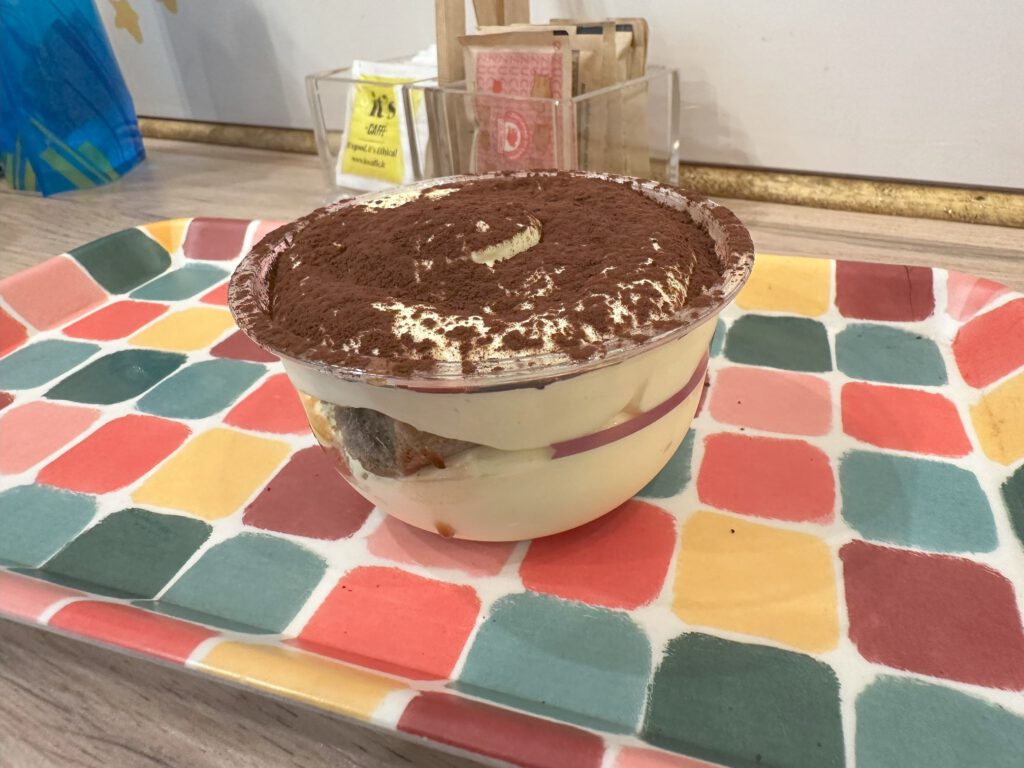
Day 2
Day 2 in Rome was the one I was most excited about.
We skipped breakfast and headed straight to our first destination, just a 30-minute walk away.
Pantheon
We had booked a GetYourGuide tour for the Pantheon, since we’d read that lines could be long – and that was absolutely true. We had a skip-the-line ticket for 9:30 AM, which we picked up next to the Pantheon at a small elephant statue. Our guide was already waiting and took us straight in on time without any queue.

The Pantheon is a must-see in Rome. The dome is over 2,000 years old and still the largest unreinforced concrete dome in the world, built with no steel, no modern tech. If you go around midday, sunlight beams through the oculus (the circular opening at the top) and lights up the interior.
It’s not a ruin, it’s still an active church.
You won’t spend hours inside, but those 30 minutes were powerful and humbling.
*Provider: GetYourGuide
Pantheon Skip the Line ticket
Click here
*Provider: Viator
Pantheon Roma Skip-the-Line Tickets
Click here
Buses in Rome
Afterwards, we took a bus back to our hotel for a proper breakfast at Maccarone Fresco again. You can buy bus tickets at many small kiosks across the city, usually near bus stops. They cost €1.50 and are valid across much of the city. Just validate them on board using the machines.

Piazza del Popolo
Our afternoon started at Piazza del Popolo.
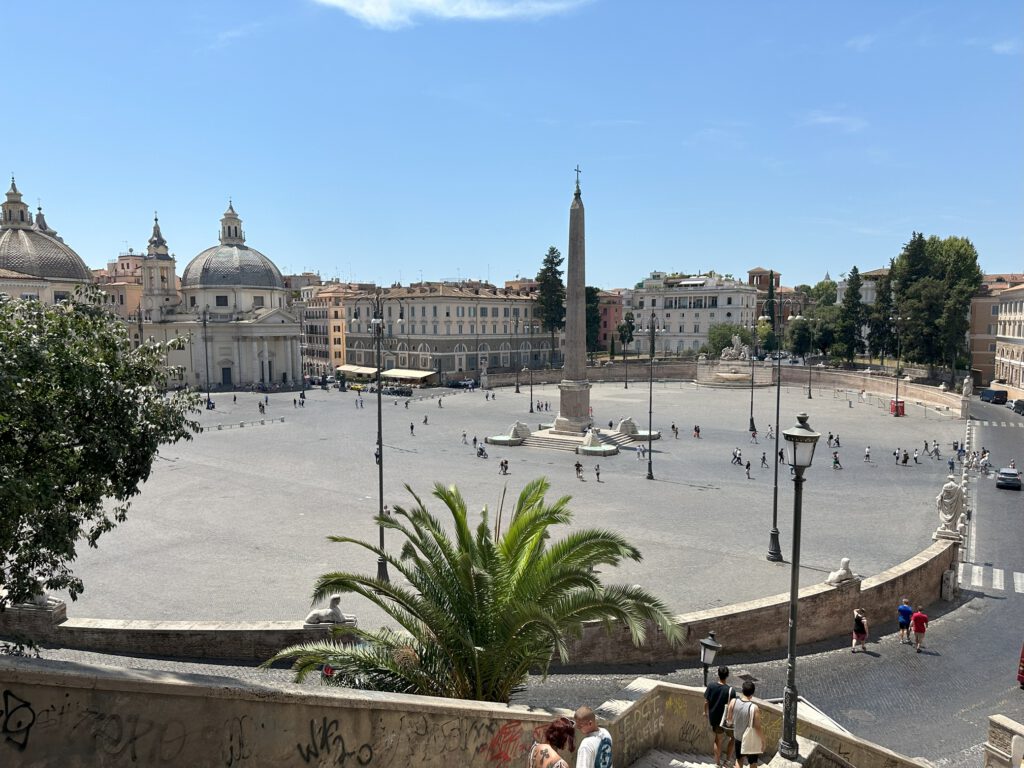
It’s a large open square with an Egyptian obelisk in the center and two almost identical churches side by side. Historically, this was Rome’s northern gateway – travelers entered the city through the Porta del Popolo.
For the best view of the square, head up the stairs to the Terrazza del Pincio, which offers scenic corners with fountains, benches, shade, and often live music.
Spanish Steps
Next: 135 iconic steps. As a football fan, I knew this spot from the countless photos of traveling fans during European matches. The steps stretch from Piazza di Spagna up to the Trinità dei Monti church. Sitting on the stairs is technically forbidden and can result in fines, but no one was enforcing that rule during our visit.
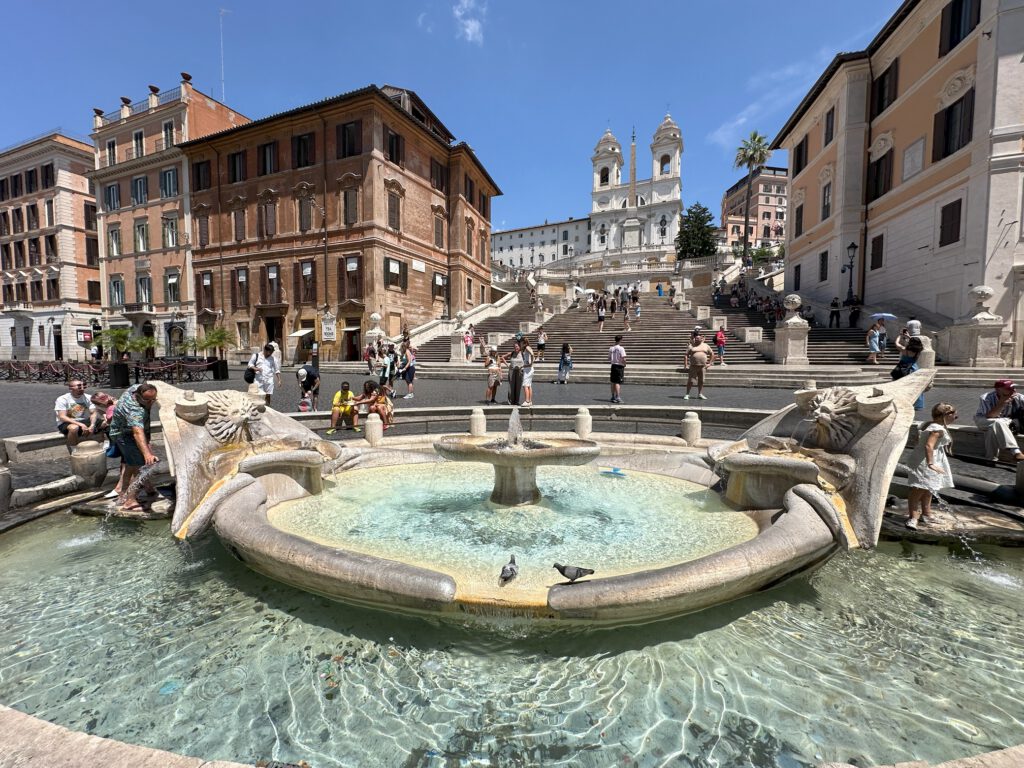
Colosseum, Roman Forum & Palatine Hill
From there, we made our way to the place I had been most looking forward to:
The Colosseum – finally crossing it off my bucket list!

We had booked another timed-entry ticket with GetYourGuide for 3:00 PM, and got in exactly on time – no lines. (Important: don’t forget your ID or passport!)
I expected it to be much more crowded, given it was high season. We opted for a self-guided visit without a tour, which worked perfectly for us. We skipped the underground “catacombs” on purpose, the view from above was more than enough.
The best photo spot? Walk into Roman Forum, turn right shortly after the entrance, and walk back a bit, you’ll get a perfect shot of the Colosseum from there.
The Colosseum once held between 50,000 and 80,000 spectators, hosting gladiator battles, animal hunts, public executions, and grand spectacles. It even had elevators and trapdoors to move animals and scenery into the arena – incredible engineering.
A major highlight is the exposed hypogeum – the underground system of tunnels and chambers used to prepare animals and fighters.
The elliptical structure measures around 189 x 156 meters and was built from travertine and concrete.
Today, the Colosseum is one of Europe’s most visited landmarks and a symbol of Rome’s ancient power and architectural genius.
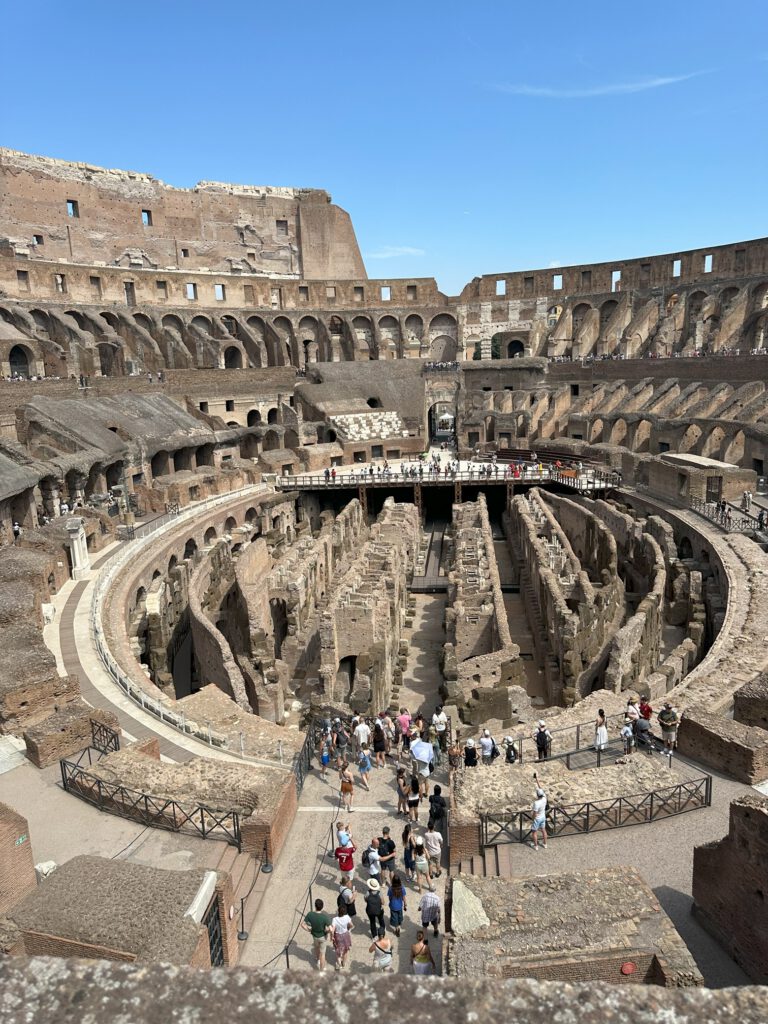
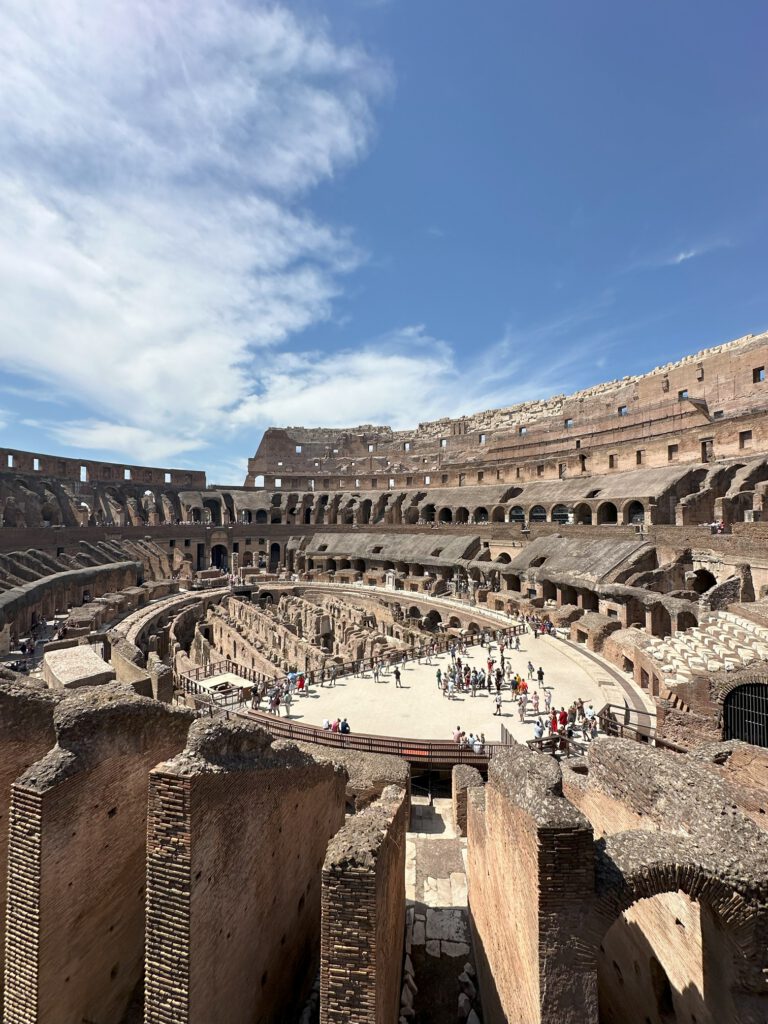
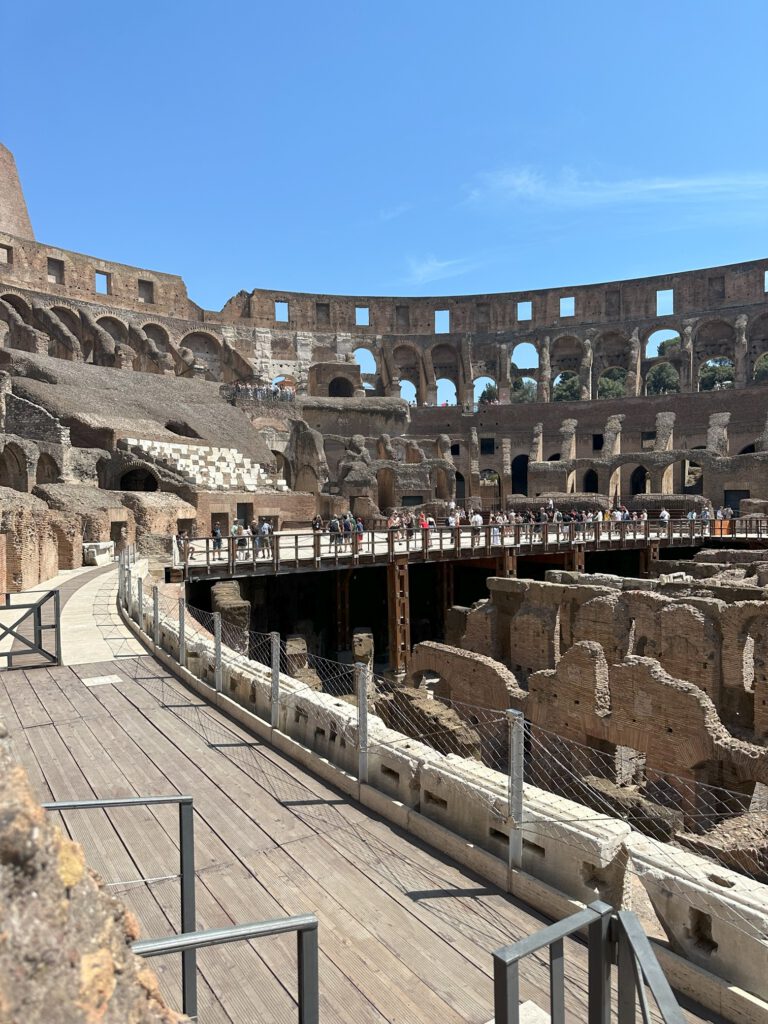
*Provider: GetYourGuide
Rome: Colosseum,Forum, Palatine Hill Entry & Audioguide App
Click here
*Provider: Viator
Rome: Colosseum, Roman Forum and Palatine Hill Fully Guided Tour
Click here
Colosseum Arena Floor, Roman Forum and Palatine Hill Guided Tour
Click here
Roman Forum
Luckily, the ticket includes Roman Forum and Palatine Hill as well. After 1.5–2 hours at the Colosseum, we walked a few steps further into the Forum.
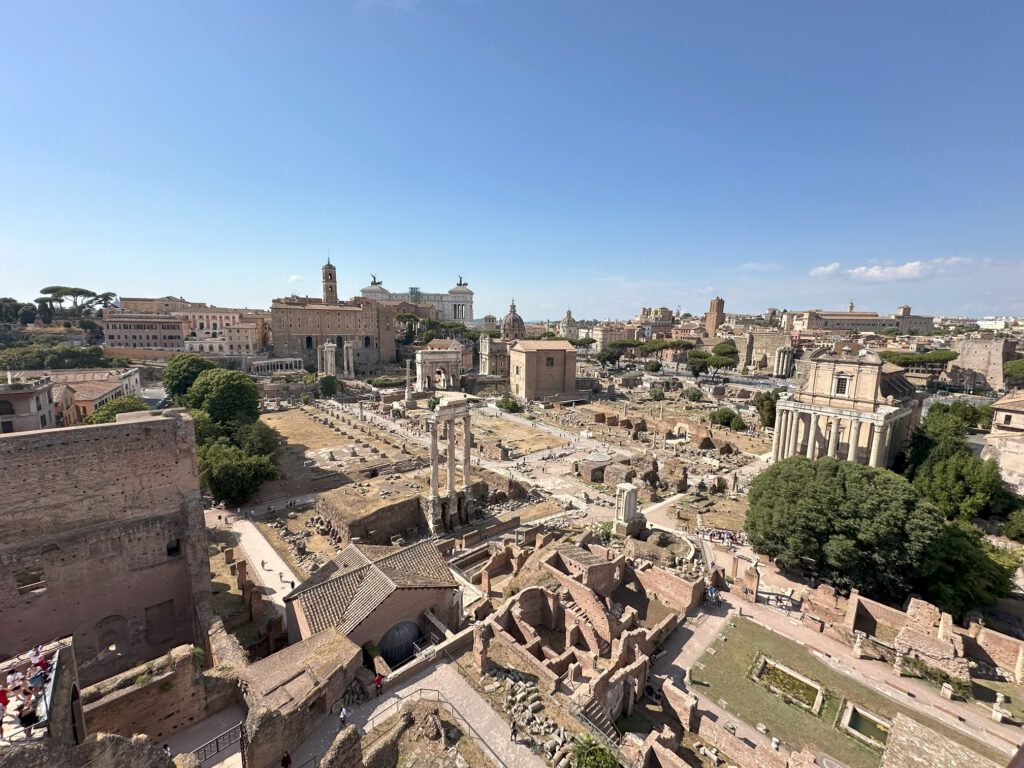
The Forum Romanum was the political, religious, and commercial heart of ancient Rome, the center of Roman life.
It’s mostly ruins now, but if you let your imagination run wild, you can still feel the hustle of ancient times: triumphal processions, senate meetings, street vendors, religious rituals… it all happened here. You’ll see remains of temples, arches, and public buildings. I found it genuinely impressive, even if the 37°C sun made it a bit draining.
Palatine Hill
After about 1.5 hours, we were beat, but of course, we still explored Palatine Hill.
The cover photo for the Forum was taken from a viewpoint up here.
Palatine Hill is one of the most historically significant spots in Rome. According to legend, Romulus founded the city here in 753 BC. So it’s not only the geographic origin of Rome, but also its symbolic birthplace.
During the imperial era, the Palatine became Rome’s most exclusive neighborhood, emperors built lavish palaces here. The word “palace” itself comes from “Palatium,” the Latin name for the hill.
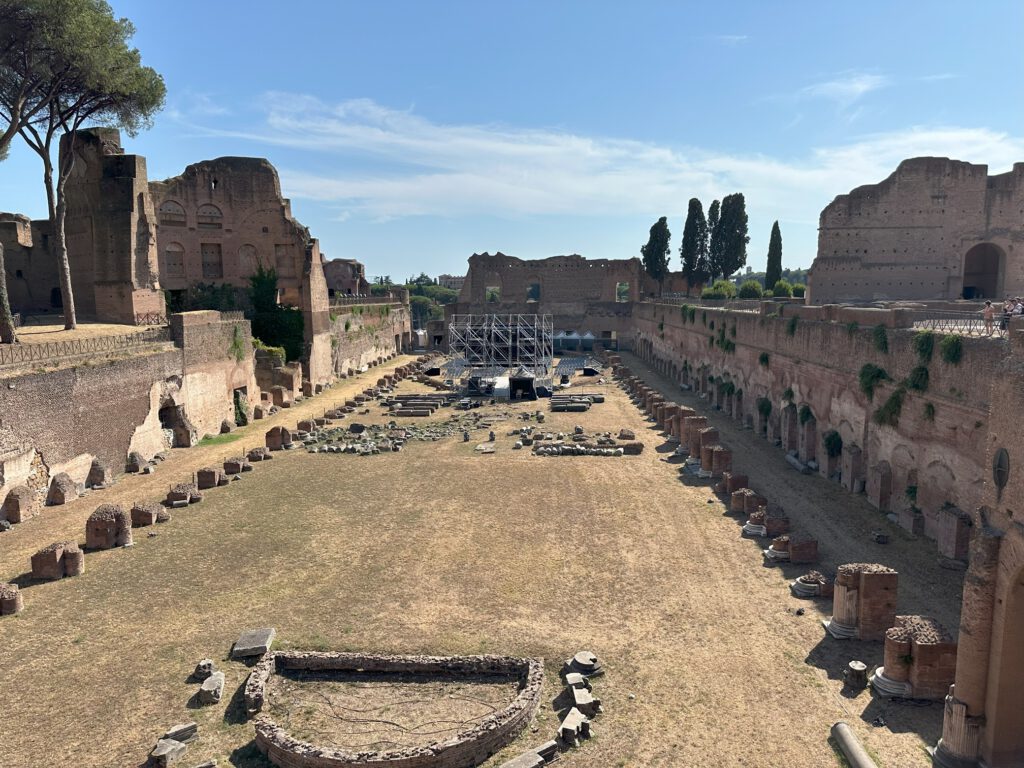
By the end of the day, we were completely wiped out. We hopped on a bus and headed to Piazza Navona.
Today it’s a lively square, but originally, it was Domitian’s Stadium for athletic events. In the center stands the Fontana dei Quattro Fiumi, symbolizing the Nile, Ganges, Danube, and Rio de la Plata. Behind it rises the baroque church Sant’Agnese in Agone.
Piazza Navona
Today it’s a lively square, but originally, it was Domitian’s Stadium for athletic events. In the center stands the Fontana dei Quattro Fiumi, symbolizing the Nile, Ganges, Danube, and Rio de la Plata. Behind it rises the baroque church Sant’Agnese in Agone.
Piazza Navona is lively during the day, but it’s in the evening when the atmosphere becomes truly special – with artists, musicians, and cafés lit up all around. Yes, the prices are higher here, but it’s worth it to sit down with a coffee or Aperol and soak in the scene.
Unfortunately for us, the entire square was under construction during our visit.
Hungry and tired, we had already looked up a few great restaurant tips. We chose a place near Piazza Navona, no basic tourist pasta dishes, but instead authentic flavors from central Italy: dry-cured ham, aged pecorino, truffle cheese, marinated artichokes, wild boar salami… all served on generously topped wooden boards.
I Pizzicaroli
I Pizzicaroli was a real hidden gem. Tiny and unassuming from the outside, but incredible food.
The star of the evening was the Nonna Basket, a giant basket of rustic specialties, just like an Italian grandma might prepare in the countryside. Paired with a Limoncello Spritz and soft background music, it was the perfect end to our second day in Rome.
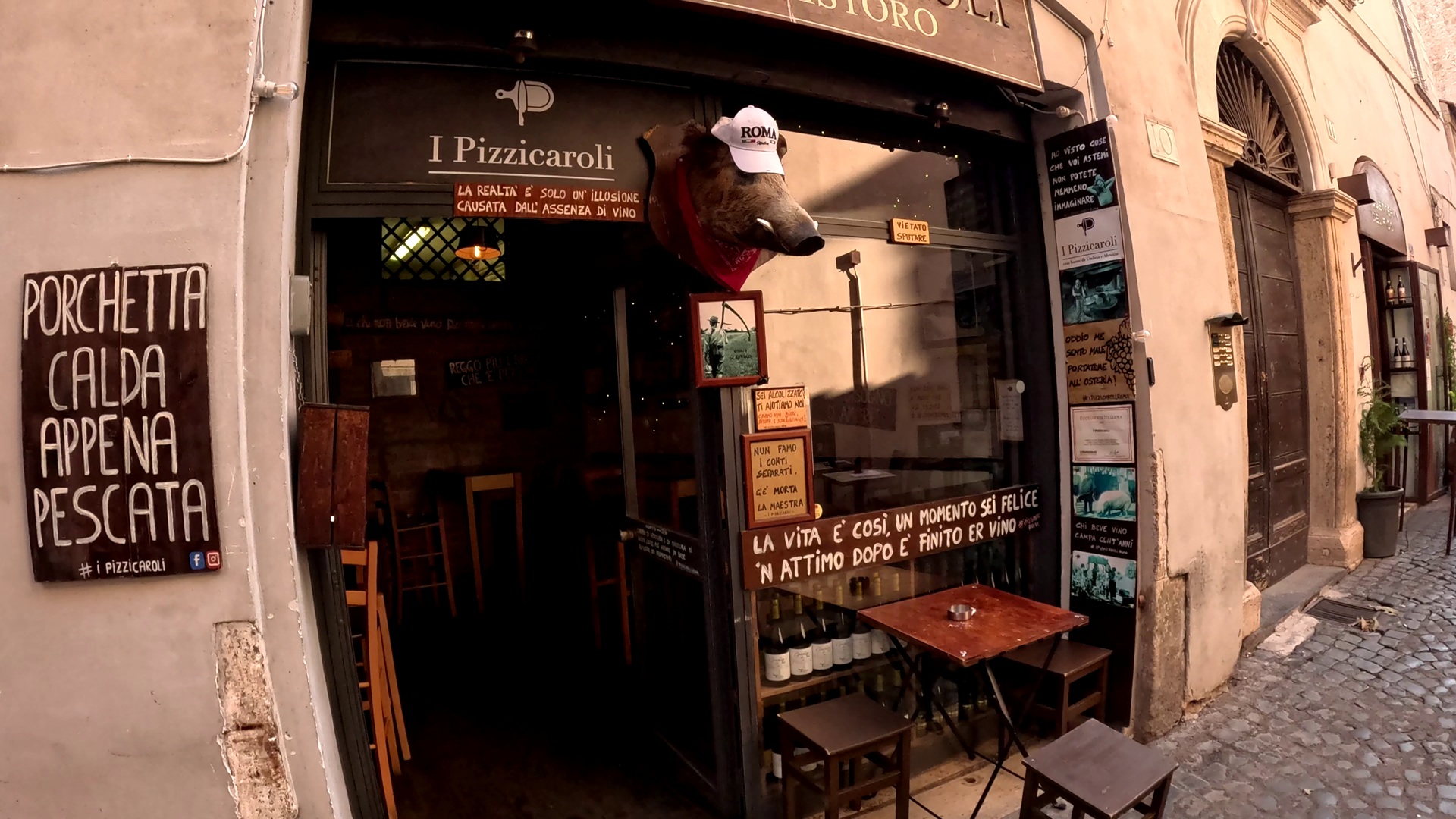
YouTube Video
Disclaimer for External Links:
I am not responsible for the content of external websites linked in this article. The responsibility for the content of linked pages lies solely with their respective operators.
*Affiliate Links:
This article contains affiliate links. If you book a tour through one of these links, I may earn a small commission — at no extra cost to you. By doing so, you’re supporting my travel blog and helping me continue to share helpful tips and content. Thank you!
Relevant to the topic
27. July 2025
- 12 Min. Lesezeit
- Italy
27. July 2025
- 11 Min. Lesezeit
- Italy
4. April 2025
- 3 Min. Lesezeit
- Italy

